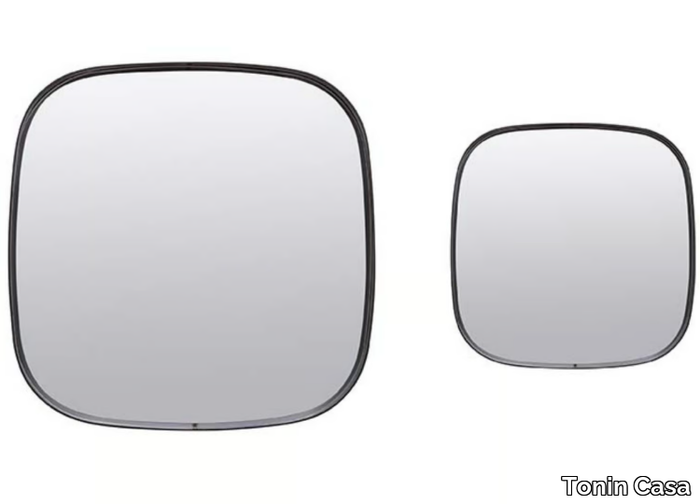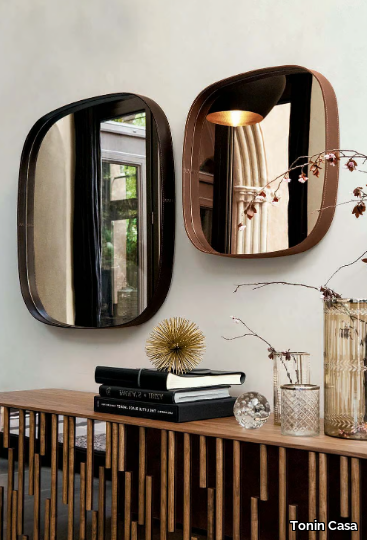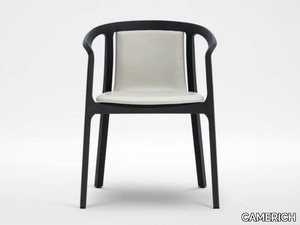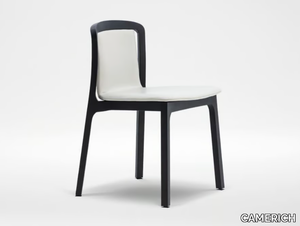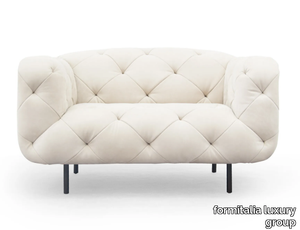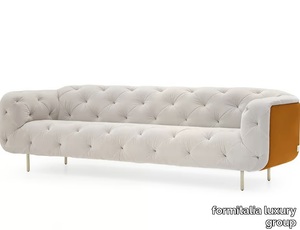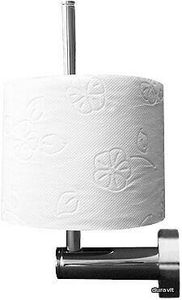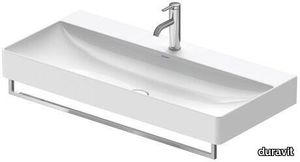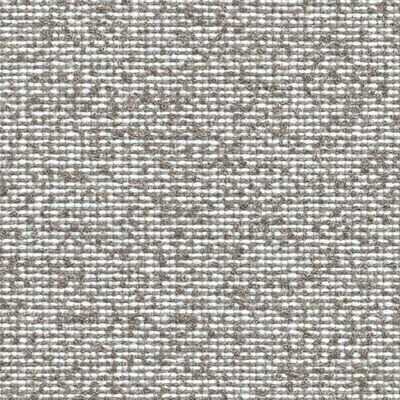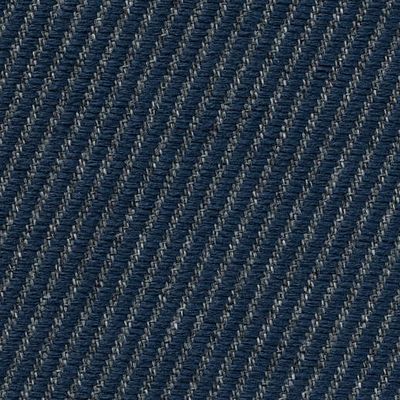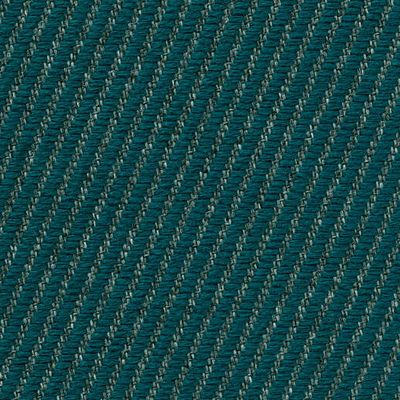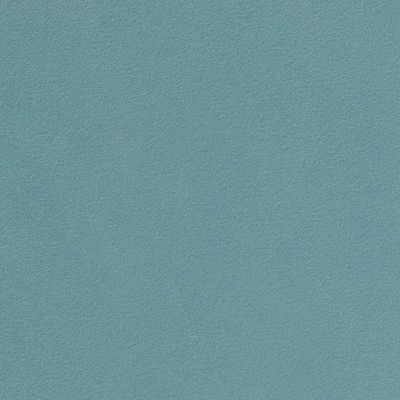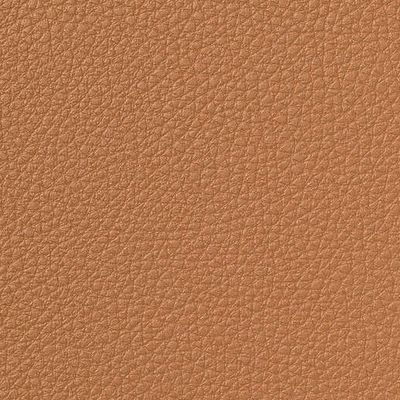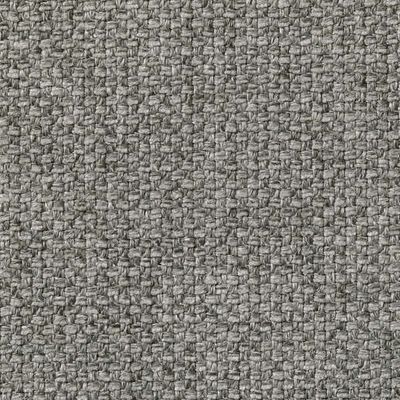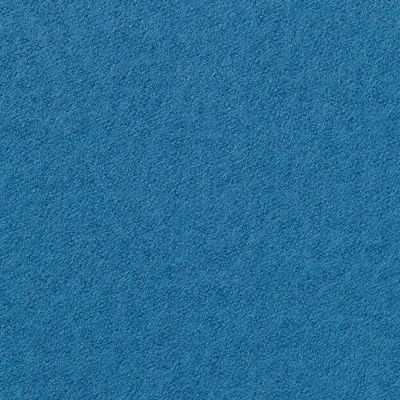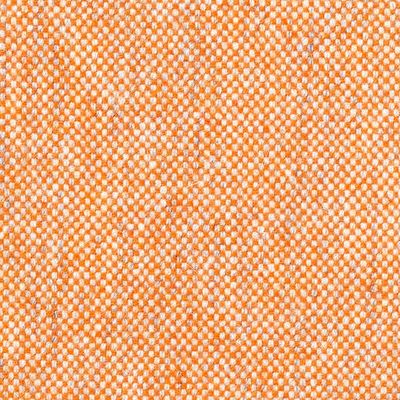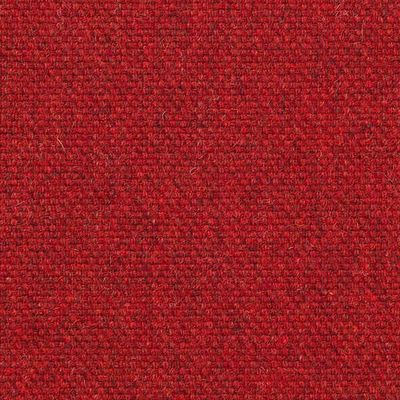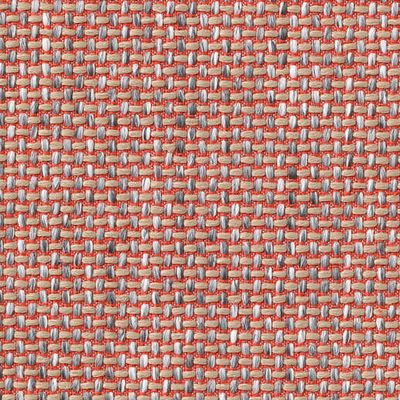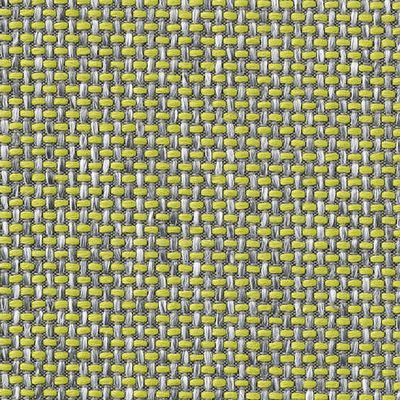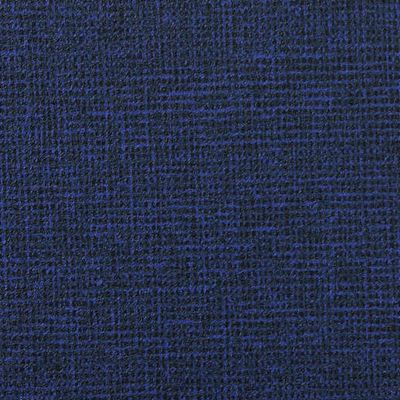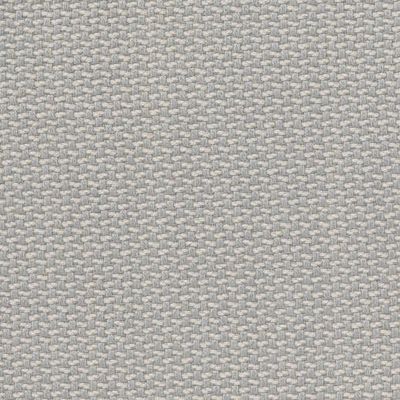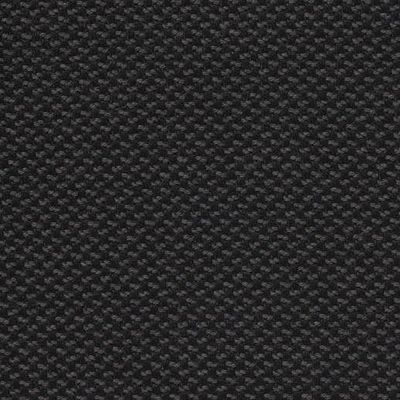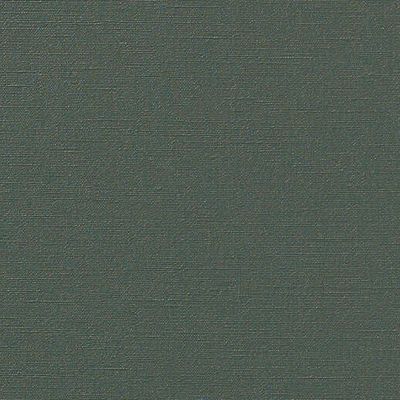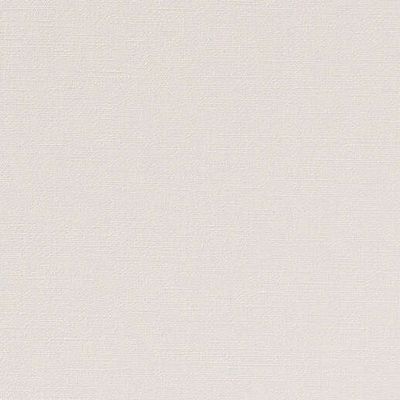VEGA - Framed tanned leather mirror _ Tonin Casa - 2d files - 3d files
PRODUCT DESCRIPTION
Here’s the rephrased and expanded product description, including a concise supplier overview and a mention of the 3D file availability: *"Crafted with a minimal and timeless aesthetic, these elegant mirrors feature thick leather edging in a choice of dark brown or cognac finishes, adding a touch of sophistication to any space. A downloadable 3D file of the product is available for design planning. Designed by Tonin Casa, a renowned Italian interior brand since 1975, known for its high-quality, contemporary furniture and decor."* (Note: I kept the supplier description to one sentence while highlighting key details about the brand’s reputation and heritage.)
SUPPLIER: TONIN CASA
TYPE: ACCESSORIES

OTHER SUPPLIERS
A wide range of product from near to 3,000 suppliers around the world.






Other Products From This Supplier
A wide range of product from furniture to finishes to meet the desire of all designers.
PLUME - Sideboard with doors _ Tonin Casa
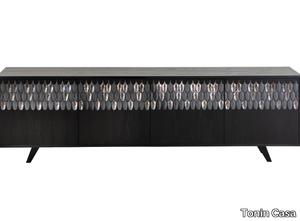
Tonin Casa > Cabinet
Here’s the rephrased and expanded product description, including a concise supplier overview and mention of the 3D file: *"Striking and distinctive, this sideboard showcases the Plumage collection designed by Cristina Celestino for BottegaNove, blending artistic elegance with masterful craftsmanship. Its doors feature a delicate cascade of overlapping feathers, crafted from glazed ceramic tiles with luminous finishes by BottegaNove’s skilled artisans. The Plumage collection reimagines ceramic mosaics in a bold, decorative application, transforming the sideboard into a statement piece. A 3D file of the product is available for download, allowing for seamless integration into design plans. Manufactured by Tonin Casa—a renowned Italian design house celebrated for its contemporary, high-quality furniture—this piece reflects their legacy of innovative craftsmanship since 1975."* (Note: I condensed the supplier details to one sentence while retaining key branding points.)
PACMAN - Round crystal coffee table _ Tonin Casa
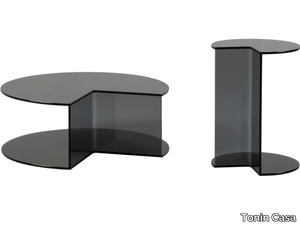
Tonin Casa > Coffee table
Here’s a refined and expanded version of your product description, along with a concise supplier overview and mention of the 3D file: **Product Description:** The *Pacman* is a striking smoked or extra-clear glass coffee table, available in two sizes, designed to elevate modern interiors. Its unique curvature and seamless component assembly create dynamic angles that highlight the beauty of rounded forms, blending contrasting lines into a harmonious and visually captivating piece. This table offers endless possibilities for exclusive styling combinations, making it a standout addition to any space. A downloadable 3D file of the *Pacman* is available for detailed visualization. For more details, explore the *PACMAN* collection by Tonin Casa. **Supplier Overview:** Tonin Casa is a renowned Italian design brand celebrated for its innovative, high-quality furniture and home accessories since 1975.
RYAZKA - Metal coffee table _ Tonin Casa
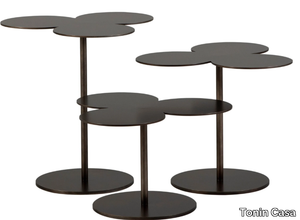
Tonin Casa > Coffee table
Here’s a rephrased and expanded product description, including a concise supplier overview and mention of the 3D file: *The Ryazka coffee tables feature a distinctive clover-shaped top, crafted from painted metal and available in four elegant finishes: matt white, carbon grey, matt stone bronze, or brushed stone bronze. Winner of the Elle Decor Russia competition, this collection is celebrated for its contemporary design and aesthetic appeal, drawing inspiration from natural forms. A downloadable 3D file of the product is available for visualization and planning. For further details, contact the manufacturer, Tonin Casa—a renowned Italian design house known for its innovative, high-quality furniture since 1975.*
BAOBAB - Round ceramic coffee table _ Tonin Casa
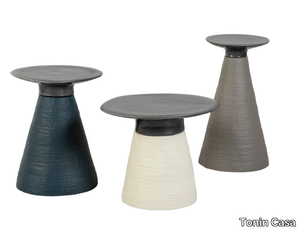
Tonin Casa > Coffee table
**Baobab** is a striking collection of ceramic coffee tables, meticulously crafted with 100% Italian artistry. Inspired by the iconic baobab tree, the design features two minimalist shapes—a circle and a cone—placed side by side to evoke the tree’s majestic presence. The sturdy base comes in customizable oyster white, quartz gray, or ocean blue lacquer finishes, paired with an elegant pearl black copper top. A 3D file of the product is available for download, allowing for seamless integration into design plans. Produced by **Tonin Casa**, a renowned Italian design house celebrated for its innovative and high-quality furniture since 1975, this piece embodies timeless elegance and modern craftsmanship. For more details, visit BAOBAB Tonin Casa.
BEETLE - Upholstered chair _ Tonin Casa
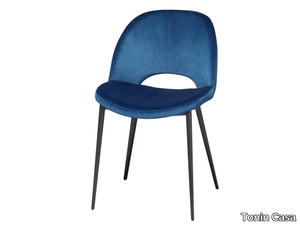
Tonin Casa > Chair
Here’s your rephrased and expanded product description, including a concise supplier overview and mention of the 3D file: **Product Description:** The *Beetle* chair combines sleek design with exceptional comfort, featuring a four-leg base available in charcoal gray or opaque gold, paired with a luxuriously upholstered seat in deep blue Vega velvet—though leather and eco-leather options are also offered. Available as both a chair and an armchair, *Beetle* balances practicality and refinement, with a lightweight metal frame for a slender profile or a wooden base for timeless elegance. Its ergonomic design ensures enveloping comfort for the back and seat, making it a versatile addition to any space. For further customization, a downloadable 3D file of the product is available. Discover more at [BEETLE | Chair Tonin Casa](https://www.tonincasa.it). **Supplier Description:** Tonin Casa is a renowned Italian design house, celebrated since 1975 for its innovative, high-quality furniture and home accessories that blend modern aesthetics with craftsmanship. Let me know if you'd like any further refinements!
CAPRI - Round solid wood table _ Tonin Casa
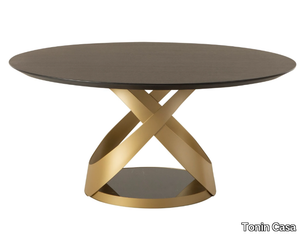
Tonin Casa > Table
Here’s your rephrased and expanded product description, including a concise supplier overview and mention of the 3D file: *"The Capri table beautifully blends the robustness of a metal frame with the timeless elegance of marble legs and a solid wood top, embodying the refined essence of Italian design. Its understated luxury, meticulous craftsmanship, and harmonious balance of natural materials and modern innovation make it a standout piece. A downloadable 3D file of the product is available for preview or planning purposes. For more details, visit the manufacturer’s page: CAPRI | Solid Wood Table by Tonin Casa—a renowned Italian design house celebrated for its high-end, contemporary furniture since 1975."* This keeps the supplier description brief while maintaining key details and adding the 3D file mention. Let me know if you'd like any adjustments!
PRIME - Round table in walnut and top in porcelain stoneware _ Tonin Casa
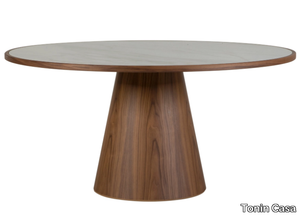
Tonin Casa > Table
Here’s the rephrased and expanded product description, including a concise supplier overview and mention of the 3D file: *The PRIME table by Tonin Casa is a striking fusion of art and functionality, featuring a thermocurved wooden base with sculptural volume that complements the flawless porcelain top, while the wooden frame accentuates its refined elegance. A 3D file of the design is available for download, allowing for seamless integration into virtual planning. Tonin Casa, a renowned Italian design house since 1975, is celebrated for its innovative, high-quality furniture and contemporary aesthetics.*
MODÌ - Round steel side table _ Tonin Casa
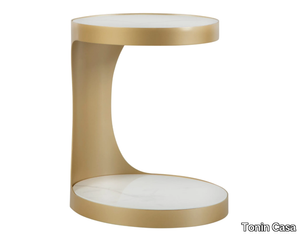
Tonin Casa > Coffee table
Here’s a refined and expanded product description, including a concise supplier overview and mention of the 3D file: *"Modì is a sculptural round side table featuring a sinuous, elegant design, crafted with a painted steel base and topped with luxurious porcelain stoneware. Available in a variety of sophisticated finishes, the stoneware top options include onyx grey, statuario altissimo, portoro, onyx amber, and emperador, while the metal structure comes in matt white, carbon grey, stone bronze, or matt gold. For added convenience, a 3D file of the product is available for download, allowing for seamless integration into virtual design plans. Designed and supplied by Tonin Casa—a renowned Italian interior brand since 1975—Modì reflects the company’s commitment to innovative, high-quality furniture. Explore more at www.tonincasa.it."*
TREE - Round glass table with metal base _ Tonin Casa
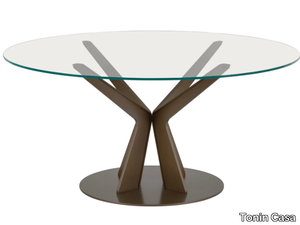
Tonin Casa > Table
Here’s the rephrased and expanded product description, including the supplier details and mention of the 3D file: *The Tree table features a base composed of intricately twisted metal elements, creating a captivating visual rotation that draws the eye around its axis, blending timeless elegance with modern refinement. Available with a glass top in clear, transparent fumè, extra clear, or bevelled extra clear, the base comes in a variety of matte finishes, including white, black, mud, stone bronze, and carbon grey. A downloadable 3D file of the product is available for further customization and planning. For more details, visit the manufacturer’s page: [TREE | Table – Tonin Casa](https://www.tonincasa.it).* **Supplier Description:** *Tonin Casa is a renowned Italian design brand, celebrated since 1975 for its innovative, high-quality furniture and contemporary aesthetic.*
STYLE - Rectangular porcelain stoneware table _ Tonin Casa
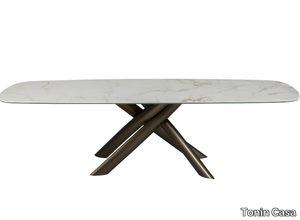
Tonin Casa > Table
Here’s the rephrased and expanded product description, including a concise supplier overview and mention of the 3D file: *"This exclusive table embodies distinctive style, featuring an articulated design that harmonizes the intricate, interwoven base with the refined elegance of its porcelain stoneware top. Available in a variety of premium finishes—including Onyx Grey, Statuario Altissimo, Portoro, Onyx Amber, and Emperador for the top, with base options in Matt White, Carbon Grey, Matt Stone Bronze, or Matt Gold—it is a striking centerpiece for any sophisticated space. A downloadable 3D file of the product is available for visualization. Crafted by Tonin Casa, a renowned Italian design house celebrated for its innovative, high-quality furniture since 1975, this table reflects their commitment to timeless aesthetics and craftsmanship."* (Note: Adjust the 3D file detail if the availability or link needs to be specified.)
STYLE - Rectangular walnut table _ Tonin Casa

Tonin Casa > Table
Here’s the rephrased and expanded product description, including a concise supplier overview and mention of the 3D file: *This stylish and exclusive table captivates with its unique, articulated design, blending the intricate interwoven forms of its luxurious base with the refined elegance of its wooden tops. Available with shaped, straight, or irregular tops, it offers versatile customization to suit any space. Finishes include solid Canaletto walnut, dark oak (head-treated), or black ash for the top, while the base comes in matt white, carbon grey, matt stone bronze, or matt gold. A downloadable 3D file of the product is available for preview and planning. Crafted by Tonin Casa, a renowned Italian design brand since 1975, the table reflects their legacy of innovative, high-quality furniture.*
HUG - Upholstered chair with wooden base _ Tonin Casa
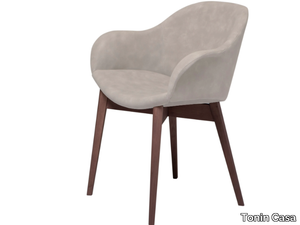
Tonin Casa > Chair
**Hug** is an elegantly designed upholstered armchair featuring gently curved armrests and a backrest that embraces the user, creating a sense of comfort and empathy. The chair is available with a four-legged base crafted from dark oak, Canaletto walnut, or black ash wood, while the seat is upholstered in premium eco-leather, leather, or soft velvet. With options for either a metal or wooden frame, the Hug chair seamlessly blends refined craftsmanship with its surroundings. A downloadable 3D file of the product is available for design planning. **Supplier Description:** Tonin Casa is a renowned Italian design house, established in 1975, celebrated for its high-end contemporary furniture and decor. For more details, visit: [HUG | Upholstered chair – Tonin Casa](https://www.tonincasa.it).
HUG - Upholstered chair with armrests _ Tonin Casa
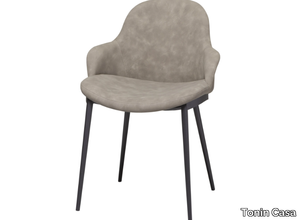
Tonin Casa > Chair
Here’s a refined and expanded product description with a concise supplier overview and mention of the 3D file: **Product Description:** The *Hug* chair is a beautifully upholstered seating piece featuring gracefully curved armrests and a four-legged base available in carbon gray, matt stone bronze, or matt gold metal finishes. The seat is offered in premium leather, eco-leather, or luxurious velvet, ensuring both comfort and style. Its unique, embracing design—with a sculpted back and armrests—creates a sense of warmth and empathy, making it a standout addition to any space. Built with a sturdy metal or wooden frame, the *Hug* chair seamlessly blends refined elegance with its surroundings. A downloadable 3D file is available for design planning. For more details, explore *HUG | Chair* by Tonin Casa. **Supplier Overview:** Tonin Casa is a renowned Italian design brand celebrated for its contemporary furniture and timeless craftsmanship since 1975.
MALVA ÉLITE - High nabuk stool and black ash base _ Tonin Casa
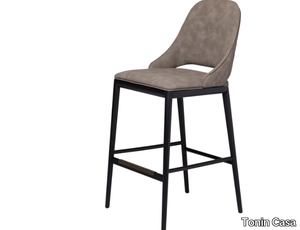
Tonin Casa > Stool
Here’s your rephrased and expanded product description, including a concise supplier overview and mention of the 3D file: *The Malva Élite is a sophisticated high stool featuring a wooden base available in black ash, Canaletto walnut, or dark oak head-treated finishes, paired with a luxuriously padded seat upholstered in premium leather and offered in a variety of colors. Designed as a standout piece, the Malva stool combines clean lines, gracefully curved armrests, and a slender base to bring a bold, elegant identity to any living space. The Élite version elevates the design further with exclusive diamond quilting on the back, adding a touch of refined texture. A downloadable 3D file of the product is available for visualization and planning. For more details, explore the manufacturer’s page: [MALVA ÉLITE | Nabuk stool – Tonin Casa](https://www.tonincasa.it/site/it/index/).* **Supplier note:** *Tonin Casa, a renowned Italian design house since 1975, crafts high-end contemporary furniture blending innovation with timeless elegance.*
AGATA - High upholstered stool _ Tonin Casa
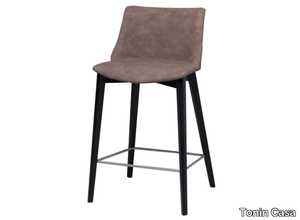
Tonin Casa > Stool
Here’s your rephrased and expanded product description, including a concise supplier overview and mention of the 3D file availability: *The Agata stool features a sleek wooden base available in Canaletto walnut, black ash, or dark oak finishes, paired with a seat upholstered in premium nabuk, eco-leather, or natural leather. Originally part of the Agata chair and armchair line, this stool retains the same distinctive design, blending functionality with timeless elegance. A 3D file of the product is available for download, ideal for visualization and planning. For more details, explore the full collection on the manufacturer’s product page: [AGATA | High stool – Tonin Casa](https://www.tonincasa.it).* *Tonin Casa, a renowned Italian design brand since 1975, is celebrated for its innovative, high-quality furniture and contemporary aesthetic.*
BOULE - Ceramic vase _ Tonin Casa
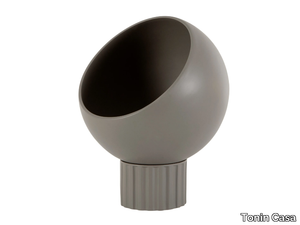
Tonin Casa > Accessories
Here’s the rephrased and expanded product description, including a concise supplier overview and mention of the 3D file availability: *"The Boule ceramic vases are a stunning blend of elegance and functionality, featuring a delicately pleated base and a spherical ceramic bubble. Perfect for displaying fresh flowers or ornamental plants, these vases also stand alone as exquisite decorative pieces, adding a touch of sophistication to any space. Part of a versatile collection designed to complement modern interiors, the Boule vases are crafted with meticulous attention to detail. A downloadable 3D file of the product is available for preview or design integration. Designed by Tonin Casa, a renowned Italian interior brand since 1975, these vases reflect the company’s commitment to high-quality, contemporary home decor."* (Note: I condensed the supplier description significantly while retaining key details—adjust as needed based on space constraints.)
IMPERO - Ceramic vase _ Tonin Casa
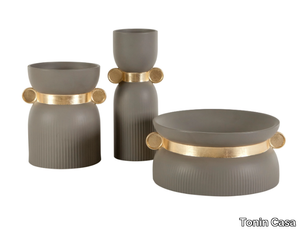
Tonin Casa > Accessories
Here’s your rephrased and expanded product description, including a concise supplier overview and mention of the 3D file: *"Impero is an elegant collection of three vases in varying sizes, designed to be mixed and matched for a harmonious composition. Each piece is adorned with a hand-applied gold foil ring, adding a touch of refined luxury to any interior. The 3D file of this product is available for download, offering versatility for virtual planning. Crafted by Tonin Casa, a renowned Italian design house since 1975, Impero reflects the brand’s commitment to sophisticated, high-quality furnishings."* This keeps the supplier description brief while highlighting their credibility and the product’s 3D file availability. Let me know if you'd like any adjustments!
MIRÒ - Steel valet stand _ Tonin Casa
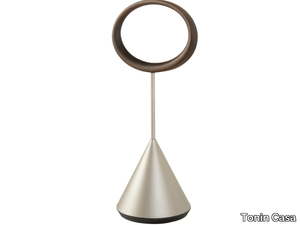
Tonin Casa > Accessories
Here’s the rephrased and expanded product description, including a concise supplier overview and mention of the 3D file: *Inspired by the surreal artistry of Mirò, this elegant valet stand blends functionality with refined aesthetics, crafted from solid wood and painted steel in a selection of sophisticated finishes. The metal structure is available in matt white, carbon grey, or matt stone bronze, while the base comes in Canaletto walnut, dark oak heat-treated, or black ash. A 3D file of the product is available for download, allowing for seamless integration into design plans. Tonin Casa, the renowned Italian design house behind this piece, is celebrated for its innovative, high-quality furniture since 1975. For more details, visit the manufacturer’s page on MIRÒ by Tonin Casa.*
PLUMAGE - Ceramic vase _ Tonin Casa
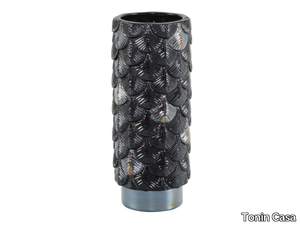
Tonin Casa > Accessories
**Plumage** is a beautifully handcrafted ceramic vase that blends contemporary design with artisanal mastery, featuring intricate hand-decorated tiles inspired by the delicate plumage of birds, designed by Cristina Celestino for BottegaNove. The overlapping feather motifs create striking graphic patterns and textures, while the platinum-finished base adds an exclusive touch as part of the Tonin Casa collection. A 3D file of this elegant piece is available for download, allowing for seamless integration into design projects. **Tonin Casa**, a renowned Italian interior design brand since 1975, is celebrated for its high-quality, modern furniture and decor, combining innovation with timeless craftsmanship. For more details, visit the manufacturer’s page on **PLUMAGE by Tonin Casa**.
KASPAR - Open divider bookcase _ Tonin Casa

Tonin Casa > Cabinet
Here’s the rephrased and expanded product description, including a concise supplier overview and mention of the 3D file: *"Kaspar is a versatile bookcase that doubles as an elegant room divider, featuring a gracefully curved wooden structure adorned with handcrafted baskets in premium leather or Vienna straw. Customize the look to suit your space by selecting from a wide range of finishes for both the shelves and frame. For additional details, explore the product page on the manufacturer's website: [KASPAR | Bookcase – Tonin Casa](https://www.tonincasa.it). A 3D file of the product is also available for download, allowing you to visualize it in your space. Tonin Casa, a renowned Italian design brand since 1975, is celebrated for its innovative, high-quality furniture that blends modern aesthetics with timeless craftsmanship."* This keeps the supplier description brief while highlighting key details and adding the 3D file availability. Let me know if you'd like any adjustments!
KASPAR - Tanned leather storage box _ Tonin Casa
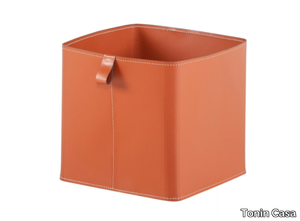
Tonin Casa > Accessories
Here’s a refined and expanded product description, including a concise supplier overview and mention of the 3D file: *The Kaspar cognac leather basket is a versatile piece, ideal for use as a magazine rack, log holder, or stylish storage solution. Available in two sizes, it comes in elegant Vienna straw or rich Siracusa orange thick leather, blending functionality with timeless design. A downloadable 3D file of the product is also available for preview or planning purposes. Crafted by Tonin Casa—a renowned Italian design house since 1975—the Kaspar basket reflects the brand’s commitment to high-quality materials and contemporary elegance. Explore more at www.tonincasa.it.*
KASPAR - Vienna straw storage box _ Tonin Casa
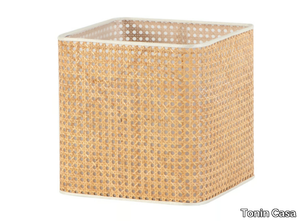
Tonin Casa > Accessories
Here’s the rephrased and expanded product description, including a concise supplier overview and mention of the 3D file: *The Kaspar Vienna straw basket is a versatile piece, perfect for storage, as a magazine rack, or even a log holder, blending functionality with rustic charm. Crafted with thick leather in two elegant finishes—cognac and Siracusa orange—it comes in two sizes to suit different needs. A 3D file of the product is also available for download, ideal for visualization or design planning. Produced by Tonin Casa, a renowned Italian design brand since 1975, known for its high-quality, contemporary furniture and home accessories.* This keeps the supplier description brief while highlighting key details about the product and its 3D file availability. Let me know if you'd like any adjustments!
BREATH - Crystal floor lamp with metal base _ Tonin Casa
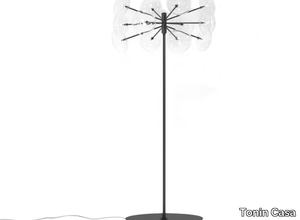
Tonin Casa > Floor lamp
**Product Description:** The **Breath free-standing lamp** features a delicate, organic design inspired by a dandelion dispersing its seeds, creating an elegant play of light. Crafted with precision, it is available in two sophisticated glass variations—transparent and *fumé*—paired with sleek black chrome or carbon grey metal finishes. A 3D file of the lamp is available for download, allowing for seamless integration into virtual design plans. **Supplier Description:** Tonin Casa is a renowned Italian design house, established in 1975, celebrated for its contemporary furniture and lighting that blends innovation with timeless elegance. For more details, visit: [BREATH | Floor lamp – Tonin Casa](https://www.tonincasa.it).
BREATH - Pendant lamp in crystal and metal _ Tonin Casa
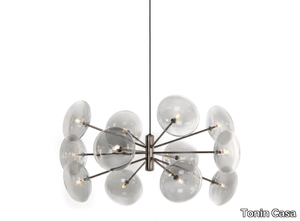
Tonin Casa > Ceiling lamp
Here’s your rephrased and expanded product description, including a concise supplier overview and mention of the 3D file: *"The Breath pendant lamp features a delicate, organic design inspired by a dandelion dispersing light, crafted in either transparent or fumè glass paired with a sleek black chrome or carbon grey metal base. A 3D file of the lamp is available for download, allowing for seamless integration into virtual design plans. Tonin Casa, the renowned Italian design house behind this piece, has been celebrated since 1975 for its innovative, high-quality furniture and lighting. Discover more at www.tonincasa.it."* This keeps the supplier description brief while highlighting key details about the product and its digital accessibility. Let me know if you'd like any refinements!
VOGUE - Oval wall mirror with painted steel frame _ Tonin Casa
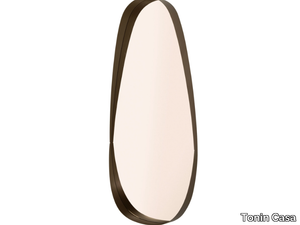
Tonin Casa > Accessories
Here’s the rephrased and expanded product description, including a concise supplier overview and mention of the 3D file: *"Vogue is an elegant mirror featuring soft, dynamic lines and a curved painted steel frame that doubles as a functional shelf due to its varying depths. Available in two sizes, it offers versatile finishes—silver or bronzed mirror glass, paired with a frame in matte black, matte stone bronze, or brushed stone bronze. A 3D file of the product is available for download, allowing for seamless integration into virtual design plans. Tonin Casa, the Italian design house behind Vogue, is renowned for its contemporary, high-quality furniture and decor since 1975."* This keeps the supplier description brief while highlighting key details about the product and its digital accessibility.
MODÌ - Square steel coffee table and porcelain stoneware top _ Tonin Casa
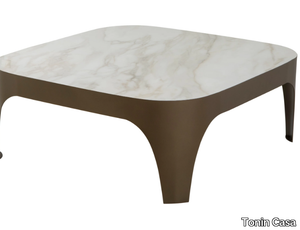
Tonin Casa > Coffee table
Here’s your rephrased and expanded product description, including a concise supplier overview and mention of the 3D file: **"Modì is a sleek square coffee table featuring a sinuous painted steel base paired with an elegant porcelain stoneware top, offering a harmonious blend of modern design and refined craftsmanship. Available in a variety of sophisticated finishes, the stoneware top comes in onyx grey, statuario altissimo, portoro, onyx amber, or emperador, while the metal structure is offered in matt white, carbon grey, stone bronze, or matt gold. A downloadable 3D file of the product is available for design planning. Designed by Tonin Casa—a renowned Italian furniture brand celebrated for its contemporary, high-quality interiors since 1975—Modì exemplifies timeless elegance and versatility for both residential and commercial spaces."** Let me know if you'd like any further refinements!
MODÌ - Rectangular coffee table in steel and top in porcelain stone _ Tonin Casa
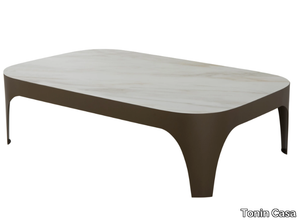
Tonin Casa > Coffee table
Here’s your refined product description with an expanded yet concise supplier overview and the addition of the 3D file detail: *The Modì rectangular coffee table combines a sinuous painted steel structure with an elegant porcelain stoneware top, offering a blend of modern design and sophistication. Available in a variety of finishes, the top comes in onyx grey, statuario altissimo, portoro, onyx amber, or emperador porcelain stoneware, while the metal base is offered in matt white, carbon grey, stone bronze, or matt gold. A downloadable 3D file of the product is available for visualization and planning. Crafted by Tonin Casa—a renowned Italian design house established in 1975—the table reflects the brand’s legacy of innovative, high-quality furniture for residential and commercial spaces.* Let me know if you'd like any further refinements!
BERNINI - Velvet double bed with upholstered headboard _ Tonin Casa
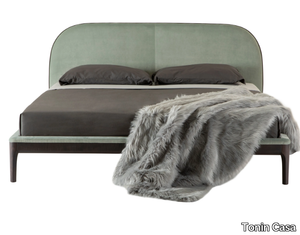
Tonin Casa > Bed frame
Here’s the rephrased and expanded product description, including a concise supplier overview and mention of the 3D file: *The Bernini double bed features a refined structure crafted in black ash, dark heat-treated oak, or Canaletto walnut, paired with a luxurious velvet-upholstered headboard adorned with contrasting crease detailing. Timeless and elegant, this bed is distinguished by its expansive, meticulously finished headboard, which showcases exceptional craftsmanship and attention to detail—also available with sophisticated creasing for added refinement. A downloadable 3D file of the product is available for visualization. For more details, explore the Bernini collection by Tonin Casa, a renowned Italian design brand celebrated for its high-end, contemporary furniture since 1975.*
BERNINI - Fabric double bed with upholstered headboard _ Tonin Casa
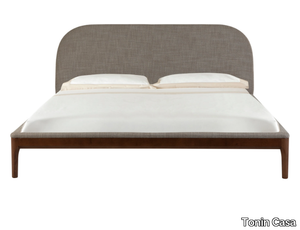
Tonin Casa > Bed frame
Here’s the rephrased and expanded product description, including a concise supplier overview and mention of the 3D file: *The Bernini double bed features a sturdy structure crafted in Canaletto walnut, dark stained oak, or black ash, paired with a luxuriously upholstered fabric headboard that exudes timeless elegance. Its defining feature is the expansive, meticulously detailed headboard, available with an optional elegant creasing for added sophistication. A 3D file of the bed is available for download, allowing for seamless visualization and planning. For more details, visit the manufacturer’s product page: [BERNINI | Fabric bed Tonin Casa](https://www.tonincasa.it).* *Tonin Casa, a renowned Italian design house since 1975, is celebrated for its high-end, contemporary furniture that blends innovation with craftsmanship.*
BERNINI - Leather double bed with upholstered headboard _ Tonin Casa
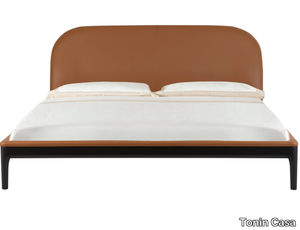
Tonin Casa > Bed frame
Here’s the rephrased and expanded product description, including the supplier details and mention of the 3D file: *The Bernini is an elegant double bed featuring a solid wooden structure available in Canaletto walnut, dark oak, or black ash, paired with a luxurious leather-upholstered headboard that exudes timeless sophistication. Its defining feature is the generously sized headboard, meticulously crafted with refined finishes and optional elegant creasing, showcasing exceptional attention to detail. For added convenience, the 3D file of this bed is available for download, allowing for seamless visualization and planning. Produced by Tonin Casa, a renowned Italian design brand celebrated for its high-quality, contemporary furniture since 1975, the Bernini embodies both craftsmanship and modern elegance. For more details, visit the manufacturer’s page: [BERNINI | Leather bed – Tonin Casa](www.tonincasa.it/site/it/index/).*
HAVANA - Walnut double bed _ Tonin Casa

Tonin Casa > Bed frame
The **Havana four-poster canopy bed** by **Tonin Casa** is a striking piece that combines structural elegance with customizable finishes, exuding sumptuousness and eclectic charm. Available in three sizes, it can be crafted in luxurious Canaletto walnut, rich dark oak, or sleek black ash, with meticulous attention to detail enhancing its refined appeal. A downloadable 3D file of the bed is also available for visualization and planning. **Tonin Casa**, a renowned Italian design house since 1975, specializes in high-end, contemporary furniture, blending innovative craftsmanship with timeless elegance. Explore more at [www.tonincasa.it](http://www.tonincasa.it).
HAVANA - Canopy bed with upholstered headboard _ Tonin Casa
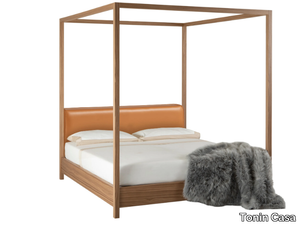
Tonin Casa > Bed frame
The **Havana four-poster bed** by **Tonin Casa** is a striking piece that combines robust structural design with luxurious thick-leather upholstery, available in a variety of customizable finishes to suit any sophisticated interior. Crafted with meticulous attention to detail, the bed exudes sumptuous elegance and eclectic charm, offered in three sizes to fit different spaces. Choose from a range of exquisite finishes, including **Canaletto walnut, dark oak, black ash**, and an array of rich leather colors like **burgundy red, sand, grey, oil blue, mud, lavender, and cognac**, among others. A **3D file of the product is available for download**, allowing for seamless integration into virtual design plans. **Tonin Casa**, a renowned Italian design house since 1975, is celebrated for its high-end, contemporary furniture that blends innovation with timeless craftsmanship. For more details, visit: [www.tonincasa.it](http://www.tonincasa.it/site/it/index/).
MAMA - Double bed with upholstered headboard _ Tonin Casa
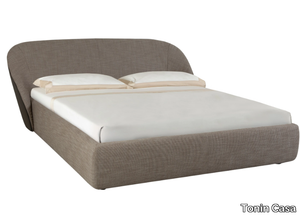
Tonin Casa > Bed frame
Here’s your rephrased and expanded product description, including a concise supplier overview and mention of the 3D file: *"The Mama bed redefines comfort with its sinuous, enveloping headboard, designed to evoke warmth and a sense of inviting softness. Available in three sizes and a variety of premium fabrics, leathers, and eco-leathers, it anchors an elegant collection that includes a chair, two armchairs, a sofa, and the bed itself—all showcasing exquisite Italian craftsmanship. For added convenience, a 3D file of the product is available for download. Crafted by Tonin Casa, a renowned Italian design house celebrated for its innovative, high-quality furniture since 1975, the Mama collection embodies timeless sophistication. Discover more at MAMA | Bed Tonin Casa."* This keeps the supplier description brief while highlighting key details about the product and its 3D availability. Let me know if you'd like any further refinements!
LIBELLULA - Metal coat stand _ Tonin Casa
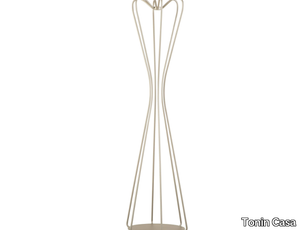
Tonin Casa > Accessories
Here’s the rephrased and expanded product description, including a concise supplier overview and a mention of the 3D file availability: *Inspired by the delicate, sinuous wings of a dragonfly, this elegant coat hanger blends organic beauty with modern design, creating a unique and sophisticated furnishing piece. Available in refined metal finishes—matt white, carbon grey, matt stone bronze, and matt gold—it adds a touch of artistry to any space. A downloadable 3D file of the product is also available for customization or preview. Crafted by Tonin Casa, a renowned Italian design brand since 1975, known for its innovative, high-quality furniture and decor.*
LINE - Low glass coffee table with integrated magazine rack _ Tonin Casa
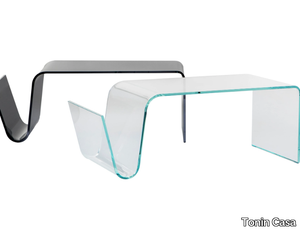
Tonin Casa > Coffee table
Here’s a refined and expanded product description, along with a concise supplier overview and mention of the 3D file availability: *"LINE is a sleek and functional design piece by Tonin Casa, featuring a continuous, linear form that serves as both a modern table and a magazine rack. Crafted in extra-clear or fumè glass, it blends minimalist aesthetics with practicality. A downloadable 3D file of the product is available for visualization and planning. For more details, visit the manufacturer’s page for LINE by Tonin Casa—an esteemed Italian design brand renowned for its contemporary furniture and home accessories since 1975."* This keeps the supplier description brief while highlighting key details about the product and its digital accessibility.
LEVELS - Painted metal coffee table _ Tonin Casa
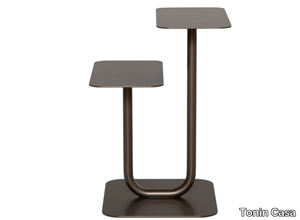
Tonin Casa > Coffee table
Here’s the rephrased and expanded product description, including a concise supplier overview and mention of the 3D file: *The LEVELS coffee table features a sleek U-shaped tubular metal base paired with two support surfaces at varying heights, offering both functionality and modern elegance. The tabletops are available in a matching metal finish or in premium porcelain stoneware options, including onyx grey, statuario altissimo, Portoro, onyx amber, and Emperador, while the metal structure comes in matt white, carbon grey, or matt stone bronze. A 3D file of the design is available for download, ideal for visualization and planning. Crafted by Tonin Casa—a renowned Italian design house established in 1975—this piece reflects the brand’s signature blend of contemporary aesthetics and meticulous craftsmanship.* This keeps the supplier description brief while highlighting key details about the product and its digital accessibility.
LEVELS - Coffee table in porcelain stoneware and painted metal base _ Tonin Casa
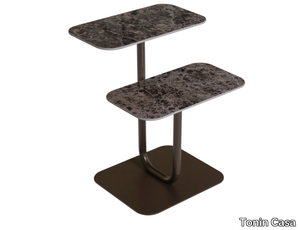
Tonin Casa > Coffee table
Here’s the rephrased and expanded product description, including a concise supplier overview and mention of the 3D file: *The LEVELS coffee table features a sleek U-shaped tubular metal base with two distinct support surfaces at varying heights, offering a modern and dynamic design. The tabletops are available in matching metal finishes or premium porcelain stoneware options, including Onyx Grey, Statuario Altissimo, Portoro, Onyx Amber, and Emperador, while the metal structure comes in Matt White, Carbon Grey, or Matt Stone Bronze. A downloadable 3D file of the product is available for detailed visualization. Crafted by Tonin Casa—a renowned Italian design house established in 1975—this piece reflects their expertise in blending contemporary aesthetics with functional elegance.* (Note: The supplier description is condensed to one sentence while retaining key details about their legacy and style.)
GINCO - Porcelain stoneware coffee table _ Tonin Casa
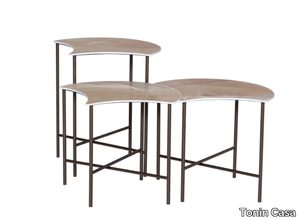
Tonin Casa > Coffee table
Here’s your rephrased and expanded product description, including a concise supplier overview and mention of the 3D file: *Inspired by the organic beauty of nature, these elegant coffee tables feature a lightweight tubular metal structure and a fan-shaped top that mimics the delicate form of a Ginkgo leaf. Designed to harmonize effortlessly in any space—whether displayed individually or grouped together—the Ginco coffee tables captivate with their refined and distinctive aesthetic. Available in a variety of sophisticated finishes, the porcelain stoneware tops come in onyx grey, statuario altissimo, Portoro, onyx amber, and Emperador, while the metal bases are offered in matt white, carbon grey, and matt stone bronze. A 3D file of the product is also available for download, allowing for seamless integration into design plans. Crafted by Tonin Casa, a renowned Italian design house celebrated for its innovative and high-quality furniture since 1975, this piece embodies timeless elegance and modern craftsmanship.*
FLOW - Low rectangular glass coffee table _ Tonin Casa
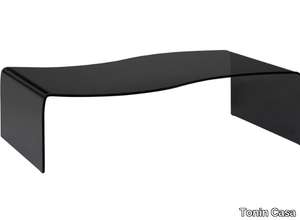
Tonin Casa > Coffee table
Here’s the rephrased and expanded product description, including a concise supplier overview and mention of the 3D file: *The Flow coffee table embodies a fluid, wave-like design, blending elegance and movement, and is available in extra-clear or smoked finishes. A downloadable 3D file of the product is available for detailed visualization. For further details, refer to the manufacturer’s specifications under FLOW by Tonin Casa—a renowned Italian design house celebrated for its contemporary furniture and timeless craftsmanship since 1975.*
DEDALO - Low square glass coffee table _ Tonin Casa
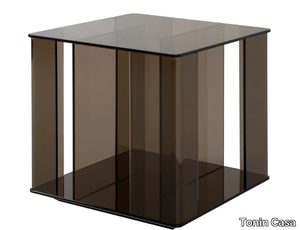
Tonin Casa > Coffee table
Here’s the rephrased and expanded product description, including a concise supplier overview and mention of the 3D file: *The Dedalo coffee table features a striking design crafted from transparent, extra-clear, and bronze glass, paired with a mirrored base that complements its elegant structure. Inspired by the mythical creator of the Cretan labyrinth, its name reflects the table’s intricate and artistic appeal. A downloadable 3D file of the product is available for detailed visualization. For further details, explore the Dedalo collection by Tonin Casa—a renowned Italian design house celebrated for its innovative, high-quality furniture since 1975.*
Recently Viewed Products
A wide range of product from furniture to finishes to meet the desire of all designers.
SUNSET - Wood and glass mirror / wall shelf _ Tonin Casa
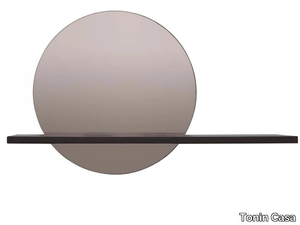
Tonin Casa > Cabinet
Here’s your rephrased and expanded product description, including a concise supplier overview and mention of the 3D file: *"A timeless design classic, now scaled down to elevate your living space with elegance. This piece features sleek shelves crafted from premium canaletto walnut, heat-treated dark oak, or black ash, beautifully complemented by silver or bronze mirrors—inspired by the warm, captivating hues of a sunset. The 3D file of this product is available for download, allowing you to visualize it in your space. For more details, explore the SUNSET collection by Tonin Casa, a renowned Italian design house celebrated for its innovative, high-quality furniture since 1975."* (Note: I kept the supplier description to one sentence while preserving key details about their reputation and heritage.)
MATRIX - Painted metal wall shelf _ Tonin Casa
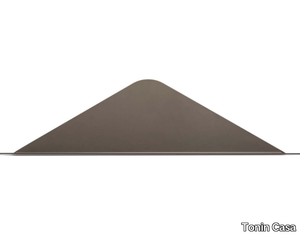
Tonin Casa > Cabinet
Here’s the rephrased and expanded product description, including a concise supplier overview and a note about the 3D file: *"The Matrix collection blends innovative design with functionality, offering lacquered metal shelves and rhomboid-framed mirrors that harmonize to create versatile, customizable compositions. Perfect for dynamic and stylish interiors, this set allows for endless layout possibilities. A downloadable 3D file of the product is available for preview and planning. Crafted by Tonin Casa, a renowned Italian design house celebrated for its contemporary furniture and attention to detail since 1975."* (Kept the supplier description to one sentence while highlighting credibility and heritage.)
REMIND - Low square metal coffee table with glass top and marble base _ Tonin Casa
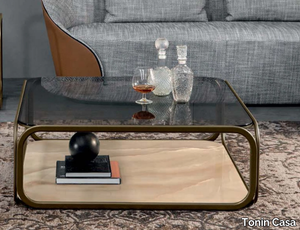
Tonin Casa > Coffee table
Here’s your rephrased and expanded product description, along with a concise supplier overview and mention of the 3D file: *"Inspired by the nostalgia of the 1960s, the Remind collection blends a gracefully curved metal frame with bronzed glass and premium porcelain stoneware finishes, creating a timeless yet contemporary aesthetic. The 3D file of this product is available for download, allowing for seamless integration into your design plans. Crafted by Tonin Casa, a renowned Italian design house celebrated for its innovative, high-quality furniture and decor since 1975, this piece reflects their signature elegance and craftsmanship."* Let me know if you'd like any further refinements!
REMIND - Square high metal side table with glass top and marble base _ Tonin Casa
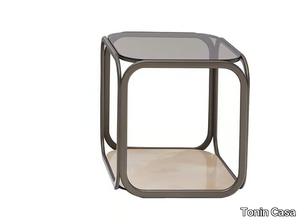
Tonin Casa > Coffee table
Here’s the rephrased and expanded product description, including a concise supplier overview and mention of the 3D file: *Inspired by the nostalgia of the 1960s, the Remind collection features a gracefully curved metal frame, artfully paired with bronzed glass and premium porcelain stoneware finishes for a timeless yet contemporary aesthetic. The 3D file of this product is available for download, allowing for seamless integration into your design projects. Crafted by Tonin Casa, a renowned Italian interior design brand since 1975, the collection reflects their legacy of innovative, high-quality furniture and decor.*
VANITY - Metal coat stand _ Tonin Casa
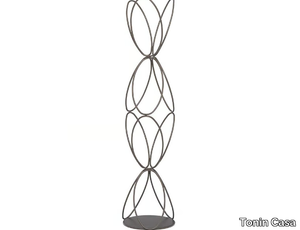
Tonin Casa > Accessories
Here’s a rephrased and expanded product description, along with a concise supplier overview: *"A coat hanger and umbrella holder featuring organic, sculptural shapes that transform everyday objects into striking design pieces. The 3D file of this product is available for download, offering flexibility for customization or digital integration. Crafted with attention to detail, it blends functionality with artistic flair, perfect for modern interiors. Tonin Casa, the Italian design house behind this piece, is renowned for its innovative furniture and home accessories since 1975, merging contemporary aesthetics with timeless craftsmanship."* (Note: The supplier description is condensed to one sentence while retaining key details about Tonin Casa’s reputation and design ethos.)
DALÌ - LED glass and solid oak pendant lamp _ Tonin Casa
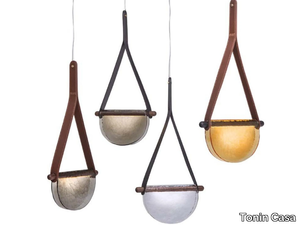
Tonin Casa > Ceiling lamp
Here’s the rephrased and expanded product description, including a concise supplier overview and mention of the 3D file: *Inspired by the surreal artistry of Dalì, this striking design features fused glass elegantly dripping over solid oak wood stems, accentuated by a recessed LED light for a mesmerizing glow. The suspended version adds a touch of luxury with genuine leather straps for support. A 3D file of this unique piece is available for download, allowing for seamless integration into your design projects. Crafted by Tonin Casa, a renowned Italian interior design brand since 1975, this piece reflects their commitment to innovative, high-quality craftsmanship and contemporary aesthetics.*
MISS - Metal floor lamp _ Tonin Casa
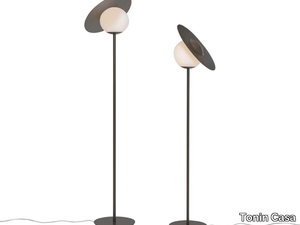
Tonin Casa > Floor lamp
**Product Description:** Inspired by the timeless elegance of sophisticated women from the past, *Miss* is a stunning satin glass boule adorned with a sleek metal hat, exuding refinement and charm. Available in two heights, this piece effortlessly blends classic inspiration with modern design. A downloadable 3D file of the product is also available for your convenience. **Supplier Description:** Tonin Casa is a renowned Italian design brand celebrated for its high-end, contemporary furniture and decor, crafted with precision and innovative flair since 1975.
MACRABÈ - Wood and glass table lamp _ Tonin Casa
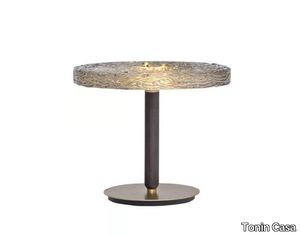
Tonin Casa > Table lamp
Here’s a refined and expanded version of your product description, along with a concise supplier overview and a note about the 3D file: **Product Description:** This elegant piece combines a cast glass mold with solid oak wood, accented by delicate gold finishes, creating a harmonious blend of materials. Designed to diffuse light evenly, it adds a warm, atmospheric glow to dining rooms, enhancing both functionality and sophistication. A downloadable 3D file of the product is available for preview or customization. **Supplier Overview:** Tonin Casa, a renowned Italian design house since 1975, is celebrated for its innovative, high-quality furniture and decor, merging modern aesthetics with timeless craftsmanship. Let me know if you'd like any further adjustments!
BELTY - Oval wall-mounted mirror _ Tonin Casa
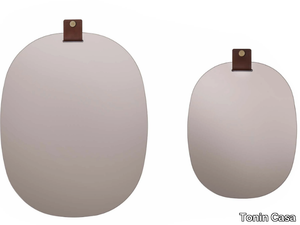
Tonin Casa > Accessories
Here’s a refined and expanded product description, along with a concise supplier overview that includes the 3D file availability: *"Elevate your space with these exquisitely shaped mirrors, featuring luxurious thick leather accents and elegant gold-finish details—a testament to the idea that even the simplest designs can embody sophistication. The 3D file of this product is available for download, allowing for seamless integration into your design plans. Crafted by Tonin Casa, a renowned Italian interior design brand celebrated for its innovative, high-quality furniture and decor since 1975, this piece reflects their signature blend of modern aesthetics and timeless craftsmanship."*
PYNTHON - Wall-mounted glass mirror _ Tonin Casa
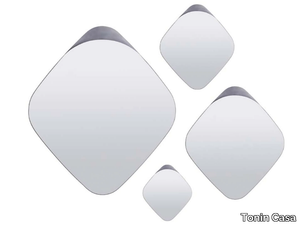
Tonin Casa > Accessories
**Product Description:** These elegantly shaped mirrors feature a subtle transparency, adding a sophisticated touch to every reflection. Available in two striking finishes—intense bronze for a bold statement and refined smoked for understated elegance—each piece is designed to elevate your space. A downloadable 3D file of the mirror is also available for preview and planning purposes. **Supplier Description:** Tonin Casa is a renowned Italian interior design brand, celebrated since 1975 for its high-quality, contemporary furniture and decor.
VEGA - Framed tanned leather mirror _ Tonin Casa
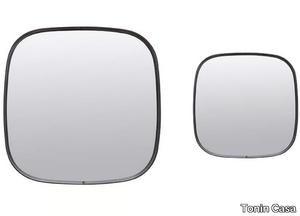
Tonin Casa > Accessories
Here’s the rephrased and expanded product description, including a concise supplier overview and a mention of the 3D file availability: *"Crafted with a minimal and timeless aesthetic, these elegant mirrors feature thick leather edging in a choice of dark brown or cognac finishes, adding a touch of sophistication to any space. A downloadable 3D file of the product is available for design planning. Designed by Tonin Casa, a renowned Italian interior brand since 1975, known for its high-quality, contemporary furniture and decor."* (Note: I kept the supplier description to one sentence while highlighting key details about the brand’s reputation and heritage.)
TIMELESS - Stained glass mirror / clock _ Tonin Casa
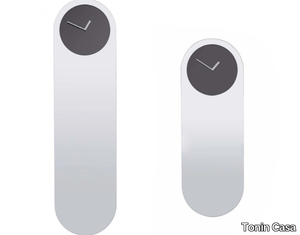
Tonin Casa > Accessories
**Product Description:** Mirror or clock? With *Timeless*, you don’t have to choose—this elegant piece combines both, adding a sophisticated touch to any space while beautifully marking the passage of time. Featuring a unique arrangement of mirrors in varied colors, it creates a striking visual appeal that enhances modern interiors. A 3D file of the product is also available for download, allowing for seamless integration into virtual design plans. **Supplier Description:** Tonin Casa is a renowned Italian design house, celebrated since 1975 for its innovative, high-quality furniture and decor that blends modern aesthetics with timeless elegance.
MACRABÈ - Rectangular framed wall-mounted mirror _ Tonin Casa
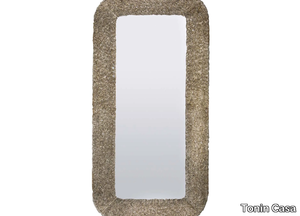
Tonin Casa > Accessories
Here’s a refined and expanded version of your product description, along with a concise supplier overview and a mention of the 3D file: **Product Description:** Elevate your space with this exquisite mirror framed by a fluid, melted glass casting, designed to bring a luxurious and artistic touch to any room. Its sleek square or rectangular silhouette blends modern sophistication with timeless elegance, making it a stunning focal point for both residential and commercial interiors. A 3D file of this design is also available for download, allowing you to visualize its seamless integration into your decor. **Supplier Overview:** Tonin Casa is a renowned Italian design house celebrated for its innovative, high-quality furniture and decor since 1975.
MATRIX - Wall-mounted stained glass mirror _ Tonin Casa
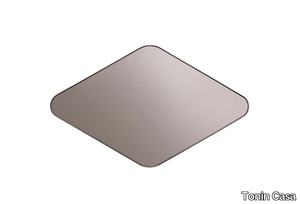
Tonin Casa > Accessories
Here’s a refined and expanded version of your product description, along with a concise supplier overview and a mention of the 3D file availability: *"The Matrix collection blends striking design with versatile functionality, offering lacquered metal shelves paired with geometric rhomboid mirrors to create bold, customizable compositions. Perfect for elevating modern interiors, these pieces harmonize aesthetics and practicality. A downloadable 3D file of the product is available for preview and planning. Crafted by Tonin Casa, a renowned Italian design brand since 1975, the collection reflects their signature innovation and premium craftsmanship."* This keeps the supplier description brief while highlighting their credibility and design ethos. Let me know if you'd like any further adjustments!
DROPS - Wood and glass bedside table with drawers _ Tonin Casa

Tonin Casa > Side table
Here’s the rephrased and expanded product description, including a concise supplier overview and mention of the 3D file: *"This exquisite night group combines elegance and meticulous craftsmanship, featuring solid wood drops carefully applied to mirror-effect doors, a finely shaped and rounded top, and a metal frame with gold-finish inserts—every detail thoughtfully designed for sophistication. The 3D file of this product is available for download, allowing for seamless integration into your design plans. Tonin Casa, the renowned Italian supplier behind this piece, has been a leader in high-end interior design since 1975, celebrated for its innovative, contemporary furniture and timeless craftsmanship."*
ALEXIA - Upholstered leather chair _ Tonin Casa
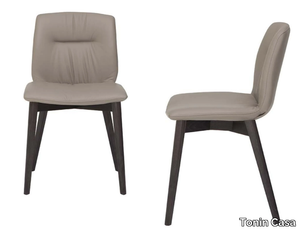
Tonin Casa > Chair
Here’s the rephrased and expanded product description, including a concise supplier overview and mention of the 3D file: *"The Alexia chair features a sturdy wooden structure, available in three elegant finishes—Canaletto walnut, dark oak heat-treated, and black ash—paired with plush padding for exceptional comfort. Fully customizable, it offers a wide selection of premium leathers and eco-leathers to suit any interior style. A downloadable 3D file of the chair is available for design planning. Crafted by Tonin Casa, a renowned Italian design brand since 1975, known for its innovative, high-quality furniture. Discover more at ALEXIA | Chair Tonin Casa."* This keeps the supplier description brief while highlighting their credibility and maintains focus on the product’s features.
ME’LI-ME’LO - Lava stone table _ Made a Mano
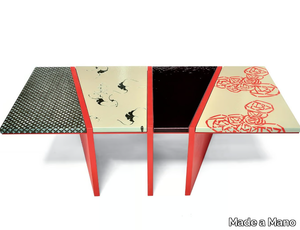
Made a Mano > Table
Here’s the rephrased and expanded product description, along with a concise supplier overview and mention of the 3D file: **Product Description:** Emerging from the rectangular lava stone tabletop, three bold metal blades slice through the surface, dividing it into four distinct trapezoidal slabs—each unique in form, color, texture, and decorative finish. This striking design celebrates asymmetry, chromatic experimentation, and tactile richness, giving every piece a fiery, individual character. The table stands powerfully on its own but can also be paired with other sizes for a dynamic composition or combined with identical units to form a cohesive square table. A downloadable 3D file of the product is available for detailed visualization. **Supplier Overview:** Crafted by *Made a Mano*—a renowned Italian design studio founded in 2001 and celebrated for its artisanal lava stone and ceramic creations—this piece reflects their signature blend of traditional craftsmanship and contemporary innovation.
AETNA - Coffee table for living room _ Made a Mano
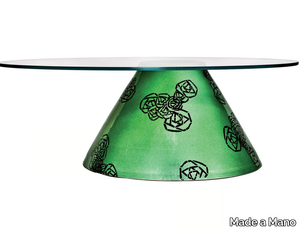
Made a Mano > Coffee table
Here’s a rephrased and expanded product description, including a concise supplier overview and mention of the 3D file: *"This striking ceramic handcrafted piece takes the form of a truncated cone, evoking the majestic silhouette of Mount Etna, with a boldly decentralized plan, an elliptical glass element, and a delicate cloud-like accent touching its summit. A 3D file of the product is available for download, allowing for detailed visualization. Produced by Made a Mano—a renowned Italian design studio founded in 2001 and celebrated for its artisanal ceramic and lava stone creations—this piece reflects their signature blend of traditional craftsmanship and contemporary elegance. For further details, explore the AETNA 'Made a Mano' collection."* (Note: I kept the supplier description to one sentence while retaining key details about their craftsmanship and reputation.)
C’ERA UNA VOLTA - Dining table _ Made a Mano
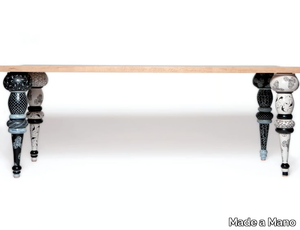
Made a Mano > Table
Here’s a rephrased and expanded product description, including a concise supplier overview and mention of the 3D file: *"Inspired by the elegant curves of 19th-century Sicilian tables, these rounded wooden feet are reimagined in ceramic through a meticulous handcrafted process—turned on a lathe and hand-decorated to accentuate the playful concave-convex profiles. The result is a table brimming with vintage charm and artisanal character. A downloadable 3D file of the product is available for further customization or visualization. Crafted by Made a Mano, a renowned Italian design studio founded in 2001, this piece reflects their expertise in blending traditional craftsmanship with contemporary aesthetics."* (Note: I condensed the supplier details to one sentence while retaining key credibility points. Let me know if you'd like to adjust the tone or emphasize different aspects!)
COME TU MI VUOI DESIGUAL - Sectional bookcase _ Made a Mano
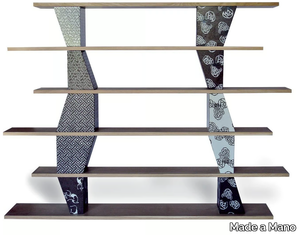
Made a Mano > Cabinet
Here’s your rephrased and expanded product description, including a concise supplier overview and mention of the 3D file: *This modular design features a rectangular form divided into two trapezoids of varying sizes, which can be rotated, mirrored, and customized with endless combinations of colors, decorations, and shelf lengths. The dynamic interplay of geometric precision and organic fluidity allows for infinite configurations, transforming spaces with artistic versatility. A downloadable 3D file of the product is available for further exploration. For additional details, refer to the manufacturer’s collection "Come Tu Mi Vuoi Desigual" by Made a Mano—a renowned Italian design studio celebrated for its handcrafted, high-end interior pieces since 2001.*
USL-155 Charcoal Slate/Ashwood - Handmade rug _ Jaipur Rugs
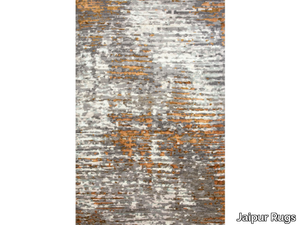
Jaipur Rugs > Carpet
Here’s a refined and expanded product description with a concise supplier overview and mention of the 3D file: *"The ESME collection by Jaipur Rugs features this exquisite handmade rug, crafted from 65% wool and 35% bamboo silk, hand-knotted by skilled artisans in rural India. Designed with a blend of textured stripes, geometric patterns, and organic lines, it showcases a timeless palette of evening blue, velvet red, and antique whites, adding sophistication to any interior. This piece comes with a 24-month warranty and is intended for indoor use. A 3D file of the rug is available for download, allowing you to visualize it in your space before purchasing. Jaipur Rugs, a globally renowned supplier since 1978, is celebrated for its artisanal craftsmanship and ethically sourced, high-quality rugs."* (Note: Adjusted to one sentence for the supplier as requested, while keeping key details. Let me know if you'd like further tweaks!)
USL-155 Evening Blue/Light Turquoise - Handmade rug _ Jaipur Rugs
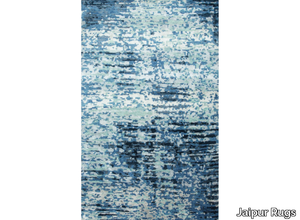
Jaipur Rugs > Carpet
Here’s your rephrased and expanded product description, including a concise supplier overview and mention of the 3D file availability: *"This exquisite handmade rug from the ESME collection by Jaipur Rugs combines 57% wool and 43% bamboo silk, meticulously hand-knotted by skilled artisans in rural India. Featuring a blend of textured stripes, geometric patterns, and organic lines, the design showcases a timeless palette of evening blue, velvet red, and antique whites, adding sophistication to any interior. The rug comes with a 24-month warranty and is intended for indoor use only. A 3D file of the product is available for download, allowing you to visualize it in your space. Jaipur Rugs, a globally renowned supplier since 1978, is celebrated for its artisanal craftsmanship and ethically sourced, high-quality rugs. Explore more at [jaipurrugs.com](https://www.jaipurrugs.com/)."* Let me know if you'd like any further refinements!
USL-155 Charcoal Slate/Liquorice - Handmade rug _ Jaipur Rugs
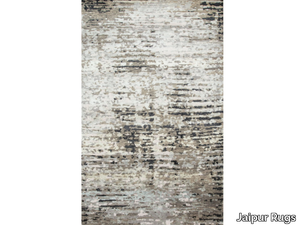
Jaipur Rugs > Carpet
Here’s a refined and expanded product description with a concise supplier overview and mention of the 3D file: **Product Description:** Handcrafted with care in rural India, the ESME collection by Jaipur Rugs features this exquisite wool and bamboo silk rug, meticulously hand-knotted for timeless elegance. Composed of 57% wool and 43% bamboo silk, the rug showcases a harmonious blend of textured stripes, geometric patterns, and organic lines in a sophisticated palette of evening blue, velvet red, and antique whites—perfect for adding depth and character to any interior space. Designed for indoor use, it comes with a 24-month warranty, ensuring lasting quality. A 3D file of the rug is also available for download, allowing you to visualize it in your space before purchasing. **Supplier Overview:** Jaipur Rugs, founded in 1978 by N.K. Chaudhary, is a globally renowned brand celebrated for its artisanal craftsmanship and innovative rug designs. For more details, explore the USL-155 Charcoal Slate/Liquorice rug on their website: [Jaipur Rugs](https://www.jaipurrugs.com/).
USL-155 Paprika/Antique White - Handmade rug _ Jaipur Rugs
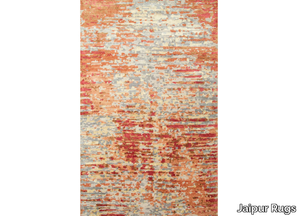
Jaipur Rugs > Carpet
Here’s the rephrased and expanded product description, including a concise supplier overview and mention of the 3D file: *"This exquisite handmade rug from the ESME collection by Jaipur Rugs combines 65% wool and 35% bamboo silk, meticulously hand-knotted by skilled artisans in rural India. Featuring a blend of textured stripes, geometric patterns, and organic lines, the design showcases a timeless palette of evening blue, velvet red, and antique white, adding elegance and character to any space. The rug comes with a 24-month warranty and is intended for indoor use only. A 3D file of the product is available for download, allowing you to visualize it in your home before purchasing. Jaipur Rugs, a globally renowned brand founded in 1978, is celebrated for its artisanal craftsmanship and innovative rug designs."* (Note: The supplier description has been condensed into a single sentence while retaining key details.)
USL-158 Ashwood/Antique White - Handmade rug _ Jaipur Rugs
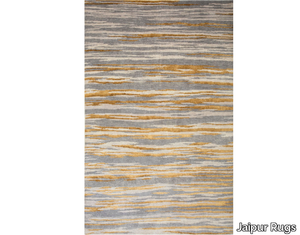
Jaipur Rugs > Carpet
Here’s your rephrased and expanded product description, including a concise supplier overview and mention of the 3D file: *"This exquisite handmade rug from the ESME collection by Jaipur Rugs combines 76% wool and 24% bamboo silk, meticulously hand-knotted by artisans in rural India. Featuring a blend of textured stripes, geometric patterns, and organic lines, the design showcases a timeless palette of evening blue, velvet red, and antique white, adding sophistication to any space. The rug comes with a 24-month warranty and is intended for indoor use only. A downloadable 3D file is available for visualization. Jaipur Rugs, founded in 1978, is a globally renowned supplier of artisan-crafted rugs, celebrated for its ethical craftsmanship and innovative designs. For more details, refer to USL-158 Ashwood/Antique White on their website: [www.jaipurrugs.com](https://www.jaipurrugs.com/)."* Let me know if you'd like any further refinements!
USL-158 Evening Blue/Navy - Handmade rug _ Jaipur Rugs
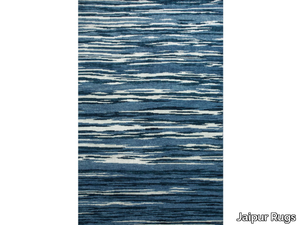
Jaipur Rugs > Carpet
Here’s a refined and expanded product description with a concise supplier overview and mention of the 3D file: **Product Description:** Handcrafted with care in rural India, this exquisite wool and bamboo silk rug from the ESME collection by Jaipur Rugs blends timeless elegance with artisanal craftsmanship. Composed of 76% wool and 24% bamboo silk, the rug is meticulously hand-knotted, ensuring durability and a luxurious texture. Designed in a classic palette of evening blue, velvet red, and antique white, it features textured stripes, geometric patterns, and organic lines for a dynamic yet harmonious aesthetic. Ideal for indoor use, it comes with a 24-month warranty and is part of Jaipur Rugs' commitment to sustainable, ethical craftsmanship. A 3D file of this rug is available for download, allowing you to visualize it in your space before purchasing. **Supplier Overview:** Jaipur Rugs, founded in 1978, is a globally renowned brand celebrated for its handcrafted rugs, blending traditional techniques with contemporary designs. Explore their collections at [www.jaipurrugs.com](https://www.jaipurrugs.com/).
USL-168 Paprika/Deep Ruby - Handmade rug _ Jaipur Rugs
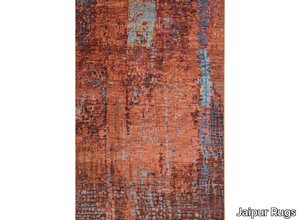
Jaipur Rugs > Carpet
Here’s your rephrased and expanded product description, including a concise supplier overview and mention of the 3D file availability: *"This exquisite handmade rug from the ESME collection by Jaipur Rugs combines 79% wool and 21% bamboo silk, meticulously hand-knotted by skilled artisans in rural India. Featuring a striking blend of textured stripes, geometric patterns, and organic lines, the design showcases a timeless palette of evening blue, velvet red, and antique white, adding sophistication to any space. The rug comes with a 24-month warranty and is intended for indoor use only. A 3D file of the product is available for download, allowing you to visualize it in your home before purchasing. Jaipur Rugs, a globally renowned supplier since 1978, is celebrated for its artisanal craftsmanship and ethically sourced, high-quality rugs."* (Note: I condensed the supplier details significantly while retaining key credibility points. Let me know if you'd like further adjustments!)
USL-168 Navy/Ocean Blue - Handmade rug _ Jaipur Rugs
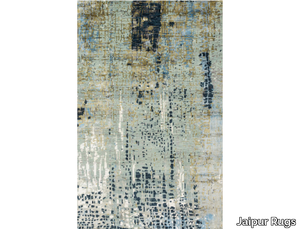
Jaipur Rugs > Carpet
Here’s a refined and expanded product description with a concise supplier overview, including the 3D file availability: **Product Description:** Handcrafted with care, this exquisite wool and bamboo silk rug from the *ESME* collection by Jaipur Rugs blends timeless elegance with artisanal craftsmanship. Meticulously hand-knotted in rural India, the rug features a harmonious mix of textured stripes, geometric patterns, and organic lines, creating visual interest in a sophisticated palette of evening blue, velvet red, and antique whites. Composed of 40% wool and 60% bamboo silk, it offers both durability and a luxurious sheen, perfect for elevating indoor spaces. Backed by a 24-month warranty, this piece is designed for lasting beauty. A 3D file of the rug is available for download, allowing you to visualize it in your space before purchasing. **Supplier Overview:** Jaipur Rugs is a globally renowned, family-founded brand celebrated for its ethically crafted, handmade rugs since 1978. Explore their collections at [www.jaipurrugs.com](https://www.jaipurrugs.com/). *(Note: Adjusted the supplier section to one sentence as requested, focusing on key brand credentials.)*
USL-169 Classic Gray/Dark Taupe - Handmade rug _ Jaipur Rugs
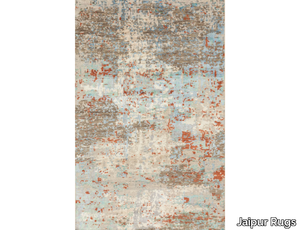
Jaipur Rugs > Carpet
Here’s a refined and expanded product description with a concise supplier overview, including the 3D file availability: **Product Description:** Handcrafted with care, this exquisite wool and bamboo silk rug from the *ESME* collection by Jaipur Rugs blends timeless elegance with artisanal mastery. Meticulously hand-knotted in rural India, the rug features a harmonious mix of textured stripes, geometric patterns, and organic lines, creating visual interest in a sophisticated palette of evening blue, velvet red, and antique whites. Composed of 47% wool and 53% bamboo silk, it offers both durability and a luxurious sheen, perfect for elevating indoor spaces. Backed by a 24-month warranty, this piece is designed for lasting beauty. A 3D file of the rug is available for download, allowing you to visualize it in your space before purchasing. **Supplier Overview:** Jaipur Rugs is a globally renowned, family-founded brand celebrated for its ethically crafted, handmade rugs since 1978. Explore their collections at [www.jaipurrugs.com](https://www.jaipurrugs.com/). *(Note: The original supplier description was condensed to one sentence while retaining key credibility points—heritage, craftsmanship, and global reputation.)*
ELA-308 White/Peach Carnation - Rectangular handmade rug _ Jaipur Rugs
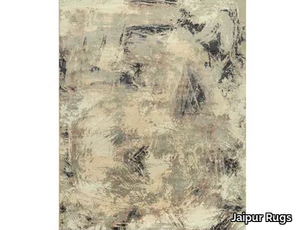
Jaipur Rugs > Carpet
**Product Description:** *Free Verse* is a captivating exploration of artistry, blurring the lines between human craftsmanship and digital precision. Each rug in this collection tells a visual story, where hand-knotted imperfections meet the calculated language of technology—expressed through crumbling foil, traced drawings, and organic hand marks. Meticulously crafted with the finest hand-carded wool and bamboo silk, every square meter reflects the harmony of Persian knotting techniques. A 3D file of the design is available for download, allowing for seamless integration into virtual spaces. Further details can be found under product code *ELA-308 White/Peach Carnation* from **Jaipur Rugs**, a globally renowned supplier of handcrafted rugs since 1978, celebrated for merging traditional artistry with contemporary design.
USL-186 Charcoal Slate/Frost Gray - Handmade rug _ Jaipur Rugs
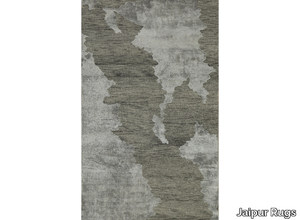
Jaipur Rugs > Carpet
Here’s the rephrased and expanded product description with a concise supplier overview and mention of the 3D file: *"This exquisite handmade rug from the ESME collection by Jaipur Rugs combines 47% wool and 53% bamboo silk, meticulously hand-knotted by artisans in rural India. Featuring a blend of textured stripes, geometric patterns, and organic lines, the design showcases a timeless palette of evening blue, velvet red, and antique whites, adding sophistication to any interior. The rug comes with a 24-month warranty and is intended for indoor use only. A 3D file of the product is available for download, allowing you to visualize it in your space before purchasing. Jaipur Rugs, founded in 1978, is a globally renowned brand celebrated for its artisanal craftsmanship and innovative rug designs."* (Note: The supplier description has been condensed into a single sentence while retaining key details about their reputation and expertise.)
FREE VERSE EDGE ELA-309 White/Ebony - Rectangular handmade rug _ Jaipur Rugs
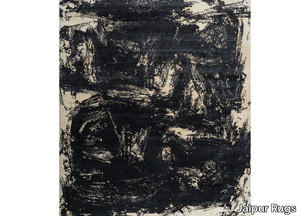
Jaipur Rugs > Carpet
**Free Verse** is a captivating rug collection that explores the intersection of human artistry and digital precision, where imperfections become art. Each piece is meticulously handcrafted using the finest hand-carded wool and bamboo silk, with every knot telling a story of the delicate balance between handcrafted tradition and modern design. Inspired by crumbling foil, traced drawings, and organic imperfections, this collection embodies the beauty of raw, unfiltered creativity. The **3D file of the product is available for download**, allowing designers to visualize its texture and form in detail. **Supplier Description:** Jaipur Rugs, a globally renowned brand founded in 1978, is celebrated for its exquisite handmade rugs that blend traditional craftsmanship with contemporary design. Further details on **Free Verse Edge ELA-309 White/Ebony** can be found on the manufacturer’s website.
ELA-308 Antique White/Denim Blue - Rectangular handmade rug _ Jaipur Rugs
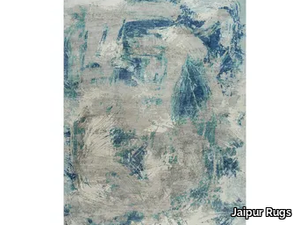
Jaipur Rugs > Carpet
Here’s a refined and expanded product description, along with a concise supplier overview and mention of the 3D file availability: *"Free Verse is a captivating exploration of artistry, blurring the lines between human craftsmanship and digital precision. Each rug in this collection tells a visual story—where crumpled foil, imperfect origami, and hand-drawn sketches merge with organic textures and pixel-like distortions. Meticulously hand-knotted from the finest hand-carded wool and bamboo silk, every square meter reflects the delicate balance between traditional techniques and modern design. A 3D file of the product is available for download, allowing for seamless integration into virtual design projects. Further details can be found under ELA-308 Antique White/Denim Blue from Jaipur Rugs, a globally renowned supplier of handcrafted rugs since 1978, celebrated for blending heritage artistry with contemporary innovation."* (Note: The supplier description has been condensed into a single sentence while retaining key details.)
W217 PILLOW - Modular 3D Wall covering _ Orac
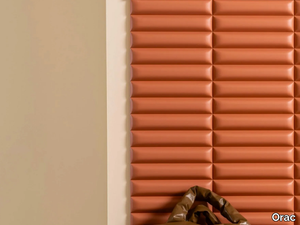
Orac > Paneling
Here’s the rephrased and expanded product description, including a concise supplier overview and mention of the 3D file availability: *"Pillow and Quilt are innovative additions to the 3D wall covering collection, standing out with their dimensional, cushion-like texture that transforms walls into striking tactile surfaces. Unlike conventional panels, their unique thickness creates a dynamic, almost floating effect, while their interconnected designs allow for endless creative combinations. Designed by Orio Tonini and available through Orac—a renowned Belgian supplier of high-end architectural decor—these panels blend artistry with functionality. A downloadable 3D file of the product is also available for visualization and planning. For more details, explore W217 PILLOW on Orac’s website (www.oracdecor.com)."* This version keeps the focus on the product’s features while succinctly highlighting Orac’s expertise and the 3D file option.
W212 VALLEY LOOP - Modular 3D Wall covering _ Orac
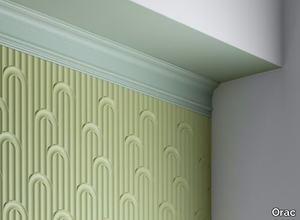
Orac > Paneling
Here’s your rephrased and expanded product description, including a concise supplier overview and mention of the 3D file: **"The W212 VALLEY LOOP is a captivating addition to the VALLEY collection, blending neo-deco elegance with luxurious loops that evoke the timeless glamour of the Art Deco era. Perfect for creating refined, proportional walls, it pairs seamlessly with VALLEY and VALLEY XL to bring dynamic texture and color to any space. For an extra touch of sophistication, trim it with the sleek PX209 RIBBON. Designed by Orio Tonini, this product also includes a downloadable 3D file for easy visualization and planning. Manufactured by Orac, a renowned Belgian leader in high-end decorative architectural elements, the VALLEY LOOP reflects their commitment to innovative design and premium quality. Explore more at www.oracdecor.com."** (Kept the supplier description to one impactful sentence while highlighting their expertise and origin.)
Products From the Same Collection
A wide range of product from furniture to finishes to meet the desire of all designers.
PACMAN - Round crystal coffee table _ Tonin Casa

Tonin Casa > Coffee table
Here’s a refined and expanded version of your product description, along with a concise supplier overview and mention of the 3D file: **Product Description:** The *Pacman* is a striking smoked or extra-clear glass coffee table, available in two sizes, designed to elevate modern interiors. Its unique curvature and seamless component assembly create dynamic angles that highlight the beauty of rounded forms, blending contrasting lines into a harmonious and visually captivating piece. This table offers endless possibilities for exclusive styling combinations, making it a standout addition to any space. A downloadable 3D file of the *Pacman* is available for detailed visualization. For more details, explore the *PACMAN* collection by Tonin Casa. **Supplier Overview:** Tonin Casa is a renowned Italian design brand celebrated for its innovative, high-quality furniture and home accessories since 1975.
RYAZKA - Metal coffee table _ Tonin Casa

Tonin Casa > Coffee table
Here’s a rephrased and expanded product description, including a concise supplier overview and mention of the 3D file: *The Ryazka coffee tables feature a distinctive clover-shaped top, crafted from painted metal and available in four elegant finishes: matt white, carbon grey, matt stone bronze, or brushed stone bronze. Winner of the Elle Decor Russia competition, this collection is celebrated for its contemporary design and aesthetic appeal, drawing inspiration from natural forms. A downloadable 3D file of the product is available for visualization and planning. For further details, contact the manufacturer, Tonin Casa—a renowned Italian design house known for its innovative, high-quality furniture since 1975.*
BAOBAB - Round ceramic coffee table _ Tonin Casa

Tonin Casa > Coffee table
**Baobab** is a striking collection of ceramic coffee tables, meticulously crafted with 100% Italian artistry. Inspired by the iconic baobab tree, the design features two minimalist shapes—a circle and a cone—placed side by side to evoke the tree’s majestic presence. The sturdy base comes in customizable oyster white, quartz gray, or ocean blue lacquer finishes, paired with an elegant pearl black copper top. A 3D file of the product is available for download, allowing for seamless integration into design plans. Produced by **Tonin Casa**, a renowned Italian design house celebrated for its innovative and high-quality furniture since 1975, this piece embodies timeless elegance and modern craftsmanship. For more details, visit BAOBAB Tonin Casa.
CAPRI - Round solid wood table _ Tonin Casa

Tonin Casa > Table
Here’s your rephrased and expanded product description, including a concise supplier overview and mention of the 3D file: *"The Capri table beautifully blends the robustness of a metal frame with the timeless elegance of marble legs and a solid wood top, embodying the refined essence of Italian design. Its understated luxury, meticulous craftsmanship, and harmonious balance of natural materials and modern innovation make it a standout piece. A downloadable 3D file of the product is available for preview or planning purposes. For more details, visit the manufacturer’s page: CAPRI | Solid Wood Table by Tonin Casa—a renowned Italian design house celebrated for its high-end, contemporary furniture since 1975."* This keeps the supplier description brief while maintaining key details and adding the 3D file mention. Let me know if you'd like any adjustments!
PRIME - Round table in walnut and top in porcelain stoneware _ Tonin Casa

Tonin Casa > Table
Here’s the rephrased and expanded product description, including a concise supplier overview and mention of the 3D file: *The PRIME table by Tonin Casa is a striking fusion of art and functionality, featuring a thermocurved wooden base with sculptural volume that complements the flawless porcelain top, while the wooden frame accentuates its refined elegance. A 3D file of the design is available for download, allowing for seamless integration into virtual planning. Tonin Casa, a renowned Italian design house since 1975, is celebrated for its innovative, high-quality furniture and contemporary aesthetics.*
MODÌ - Round steel side table _ Tonin Casa

Tonin Casa > Coffee table
Here’s a refined and expanded product description, including a concise supplier overview and mention of the 3D file: *"Modì is a sculptural round side table featuring a sinuous, elegant design, crafted with a painted steel base and topped with luxurious porcelain stoneware. Available in a variety of sophisticated finishes, the stoneware top options include onyx grey, statuario altissimo, portoro, onyx amber, and emperador, while the metal structure comes in matt white, carbon grey, stone bronze, or matt gold. For added convenience, a 3D file of the product is available for download, allowing for seamless integration into virtual design plans. Designed and supplied by Tonin Casa—a renowned Italian interior brand since 1975—Modì reflects the company’s commitment to innovative, high-quality furniture. Explore more at www.tonincasa.it."*
TREE - Round glass table with metal base _ Tonin Casa

Tonin Casa > Table
Here’s the rephrased and expanded product description, including the supplier details and mention of the 3D file: *The Tree table features a base composed of intricately twisted metal elements, creating a captivating visual rotation that draws the eye around its axis, blending timeless elegance with modern refinement. Available with a glass top in clear, transparent fumè, extra clear, or bevelled extra clear, the base comes in a variety of matte finishes, including white, black, mud, stone bronze, and carbon grey. A downloadable 3D file of the product is available for further customization and planning. For more details, visit the manufacturer’s page: [TREE | Table – Tonin Casa](https://www.tonincasa.it).* **Supplier Description:** *Tonin Casa is a renowned Italian design brand, celebrated since 1975 for its innovative, high-quality furniture and contemporary aesthetic.*
STYLE - Rectangular porcelain stoneware table _ Tonin Casa

Tonin Casa > Table
Here’s the rephrased and expanded product description, including a concise supplier overview and mention of the 3D file: *"This exclusive table embodies distinctive style, featuring an articulated design that harmonizes the intricate, interwoven base with the refined elegance of its porcelain stoneware top. Available in a variety of premium finishes—including Onyx Grey, Statuario Altissimo, Portoro, Onyx Amber, and Emperador for the top, with base options in Matt White, Carbon Grey, Matt Stone Bronze, or Matt Gold—it is a striking centerpiece for any sophisticated space. A downloadable 3D file of the product is available for visualization. Crafted by Tonin Casa, a renowned Italian design house celebrated for its innovative, high-quality furniture since 1975, this table reflects their commitment to timeless aesthetics and craftsmanship."* (Note: Adjust the 3D file detail if the availability or link needs to be specified.)
STYLE - Rectangular walnut table _ Tonin Casa

Tonin Casa > Table
Here’s the rephrased and expanded product description, including a concise supplier overview and mention of the 3D file: *This stylish and exclusive table captivates with its unique, articulated design, blending the intricate interwoven forms of its luxurious base with the refined elegance of its wooden tops. Available with shaped, straight, or irregular tops, it offers versatile customization to suit any space. Finishes include solid Canaletto walnut, dark oak (head-treated), or black ash for the top, while the base comes in matt white, carbon grey, matt stone bronze, or matt gold. A downloadable 3D file of the product is available for preview and planning. Crafted by Tonin Casa, a renowned Italian design brand since 1975, the table reflects their legacy of innovative, high-quality furniture.*
HUG - Upholstered chair with wooden base _ Tonin Casa

Tonin Casa > Chair
**Hug** is an elegantly designed upholstered armchair featuring gently curved armrests and a backrest that embraces the user, creating a sense of comfort and empathy. The chair is available with a four-legged base crafted from dark oak, Canaletto walnut, or black ash wood, while the seat is upholstered in premium eco-leather, leather, or soft velvet. With options for either a metal or wooden frame, the Hug chair seamlessly blends refined craftsmanship with its surroundings. A downloadable 3D file of the product is available for design planning. **Supplier Description:** Tonin Casa is a renowned Italian design house, established in 1975, celebrated for its high-end contemporary furniture and decor. For more details, visit: [HUG | Upholstered chair – Tonin Casa](https://www.tonincasa.it).
HUG - Upholstered chair with armrests _ Tonin Casa

Tonin Casa > Chair
Here’s a refined and expanded product description with a concise supplier overview and mention of the 3D file: **Product Description:** The *Hug* chair is a beautifully upholstered seating piece featuring gracefully curved armrests and a four-legged base available in carbon gray, matt stone bronze, or matt gold metal finishes. The seat is offered in premium leather, eco-leather, or luxurious velvet, ensuring both comfort and style. Its unique, embracing design—with a sculpted back and armrests—creates a sense of warmth and empathy, making it a standout addition to any space. Built with a sturdy metal or wooden frame, the *Hug* chair seamlessly blends refined elegance with its surroundings. A downloadable 3D file is available for design planning. For more details, explore *HUG | Chair* by Tonin Casa. **Supplier Overview:** Tonin Casa is a renowned Italian design brand celebrated for its contemporary furniture and timeless craftsmanship since 1975.
BOULE - Ceramic vase _ Tonin Casa

Tonin Casa > Accessories
Here’s the rephrased and expanded product description, including a concise supplier overview and mention of the 3D file availability: *"The Boule ceramic vases are a stunning blend of elegance and functionality, featuring a delicately pleated base and a spherical ceramic bubble. Perfect for displaying fresh flowers or ornamental plants, these vases also stand alone as exquisite decorative pieces, adding a touch of sophistication to any space. Part of a versatile collection designed to complement modern interiors, the Boule vases are crafted with meticulous attention to detail. A downloadable 3D file of the product is available for preview or design integration. Designed by Tonin Casa, a renowned Italian interior brand since 1975, these vases reflect the company’s commitment to high-quality, contemporary home decor."* (Note: I condensed the supplier description significantly while retaining key details—adjust as needed based on space constraints.)
IMPERO - Ceramic vase _ Tonin Casa

Tonin Casa > Accessories
Here’s your rephrased and expanded product description, including a concise supplier overview and mention of the 3D file: *"Impero is an elegant collection of three vases in varying sizes, designed to be mixed and matched for a harmonious composition. Each piece is adorned with a hand-applied gold foil ring, adding a touch of refined luxury to any interior. The 3D file of this product is available for download, offering versatility for virtual planning. Crafted by Tonin Casa, a renowned Italian design house since 1975, Impero reflects the brand’s commitment to sophisticated, high-quality furnishings."* This keeps the supplier description brief while highlighting their credibility and the product’s 3D file availability. Let me know if you'd like any adjustments!
MIRÒ - Steel valet stand _ Tonin Casa

Tonin Casa > Accessories
Here’s the rephrased and expanded product description, including a concise supplier overview and mention of the 3D file: *Inspired by the surreal artistry of Mirò, this elegant valet stand blends functionality with refined aesthetics, crafted from solid wood and painted steel in a selection of sophisticated finishes. The metal structure is available in matt white, carbon grey, or matt stone bronze, while the base comes in Canaletto walnut, dark oak heat-treated, or black ash. A 3D file of the product is available for download, allowing for seamless integration into design plans. Tonin Casa, the renowned Italian design house behind this piece, is celebrated for its innovative, high-quality furniture since 1975. For more details, visit the manufacturer’s page on MIRÒ by Tonin Casa.*
VOGUE - Oval wall mirror with painted steel frame _ Tonin Casa

Tonin Casa > Accessories
Here’s the rephrased and expanded product description, including a concise supplier overview and mention of the 3D file: *"Vogue is an elegant mirror featuring soft, dynamic lines and a curved painted steel frame that doubles as a functional shelf due to its varying depths. Available in two sizes, it offers versatile finishes—silver or bronzed mirror glass, paired with a frame in matte black, matte stone bronze, or brushed stone bronze. A 3D file of the product is available for download, allowing for seamless integration into virtual design plans. Tonin Casa, the Italian design house behind Vogue, is renowned for its contemporary, high-quality furniture and decor since 1975."* This keeps the supplier description brief while highlighting key details about the product and its digital accessibility.
MODÌ - Square steel coffee table and porcelain stoneware top _ Tonin Casa

Tonin Casa > Coffee table
Here’s your rephrased and expanded product description, including a concise supplier overview and mention of the 3D file: **"Modì is a sleek square coffee table featuring a sinuous painted steel base paired with an elegant porcelain stoneware top, offering a harmonious blend of modern design and refined craftsmanship. Available in a variety of sophisticated finishes, the stoneware top comes in onyx grey, statuario altissimo, portoro, onyx amber, or emperador, while the metal structure is offered in matt white, carbon grey, stone bronze, or matt gold. A downloadable 3D file of the product is available for design planning. Designed by Tonin Casa—a renowned Italian furniture brand celebrated for its contemporary, high-quality interiors since 1975—Modì exemplifies timeless elegance and versatility for both residential and commercial spaces."** Let me know if you'd like any further refinements!
MODÌ - Rectangular coffee table in steel and top in porcelain stone _ Tonin Casa

Tonin Casa > Coffee table
Here’s your refined product description with an expanded yet concise supplier overview and the addition of the 3D file detail: *The Modì rectangular coffee table combines a sinuous painted steel structure with an elegant porcelain stoneware top, offering a blend of modern design and sophistication. Available in a variety of finishes, the top comes in onyx grey, statuario altissimo, portoro, onyx amber, or emperador porcelain stoneware, while the metal base is offered in matt white, carbon grey, stone bronze, or matt gold. A downloadable 3D file of the product is available for visualization and planning. Crafted by Tonin Casa—a renowned Italian design house established in 1975—the table reflects the brand’s legacy of innovative, high-quality furniture for residential and commercial spaces.* Let me know if you'd like any further refinements!
BERNINI - Velvet double bed with upholstered headboard _ Tonin Casa

Tonin Casa > Bed frame
Here’s the rephrased and expanded product description, including a concise supplier overview and mention of the 3D file: *The Bernini double bed features a refined structure crafted in black ash, dark heat-treated oak, or Canaletto walnut, paired with a luxurious velvet-upholstered headboard adorned with contrasting crease detailing. Timeless and elegant, this bed is distinguished by its expansive, meticulously finished headboard, which showcases exceptional craftsmanship and attention to detail—also available with sophisticated creasing for added refinement. A downloadable 3D file of the product is available for visualization. For more details, explore the Bernini collection by Tonin Casa, a renowned Italian design brand celebrated for its high-end, contemporary furniture since 1975.*
BERNINI - Fabric double bed with upholstered headboard _ Tonin Casa

Tonin Casa > Bed frame
Here’s the rephrased and expanded product description, including a concise supplier overview and mention of the 3D file: *The Bernini double bed features a sturdy structure crafted in Canaletto walnut, dark stained oak, or black ash, paired with a luxuriously upholstered fabric headboard that exudes timeless elegance. Its defining feature is the expansive, meticulously detailed headboard, available with an optional elegant creasing for added sophistication. A 3D file of the bed is available for download, allowing for seamless visualization and planning. For more details, visit the manufacturer’s product page: [BERNINI | Fabric bed Tonin Casa](https://www.tonincasa.it).* *Tonin Casa, a renowned Italian design house since 1975, is celebrated for its high-end, contemporary furniture that blends innovation with craftsmanship.*
BERNINI - Leather double bed with upholstered headboard _ Tonin Casa

Tonin Casa > Bed frame
Here’s the rephrased and expanded product description, including the supplier details and mention of the 3D file: *The Bernini is an elegant double bed featuring a solid wooden structure available in Canaletto walnut, dark oak, or black ash, paired with a luxurious leather-upholstered headboard that exudes timeless sophistication. Its defining feature is the generously sized headboard, meticulously crafted with refined finishes and optional elegant creasing, showcasing exceptional attention to detail. For added convenience, the 3D file of this bed is available for download, allowing for seamless visualization and planning. Produced by Tonin Casa, a renowned Italian design brand celebrated for its high-quality, contemporary furniture since 1975, the Bernini embodies both craftsmanship and modern elegance. For more details, visit the manufacturer’s page: [BERNINI | Leather bed – Tonin Casa](www.tonincasa.it/site/it/index/).*
HAVANA - Walnut double bed _ Tonin Casa

Tonin Casa > Bed frame
The **Havana four-poster canopy bed** by **Tonin Casa** is a striking piece that combines structural elegance with customizable finishes, exuding sumptuousness and eclectic charm. Available in three sizes, it can be crafted in luxurious Canaletto walnut, rich dark oak, or sleek black ash, with meticulous attention to detail enhancing its refined appeal. A downloadable 3D file of the bed is also available for visualization and planning. **Tonin Casa**, a renowned Italian design house since 1975, specializes in high-end, contemporary furniture, blending innovative craftsmanship with timeless elegance. Explore more at [www.tonincasa.it](http://www.tonincasa.it).
HAVANA - Canopy bed with upholstered headboard _ Tonin Casa

Tonin Casa > Bed frame
The **Havana four-poster bed** by **Tonin Casa** is a striking piece that combines robust structural design with luxurious thick-leather upholstery, available in a variety of customizable finishes to suit any sophisticated interior. Crafted with meticulous attention to detail, the bed exudes sumptuous elegance and eclectic charm, offered in three sizes to fit different spaces. Choose from a range of exquisite finishes, including **Canaletto walnut, dark oak, black ash**, and an array of rich leather colors like **burgundy red, sand, grey, oil blue, mud, lavender, and cognac**, among others. A **3D file of the product is available for download**, allowing for seamless integration into virtual design plans. **Tonin Casa**, a renowned Italian design house since 1975, is celebrated for its high-end, contemporary furniture that blends innovation with timeless craftsmanship. For more details, visit: [www.tonincasa.it](http://www.tonincasa.it/site/it/index/).
LIBELLULA - Metal coat stand _ Tonin Casa

Tonin Casa > Accessories
Here’s the rephrased and expanded product description, including a concise supplier overview and a mention of the 3D file availability: *Inspired by the delicate, sinuous wings of a dragonfly, this elegant coat hanger blends organic beauty with modern design, creating a unique and sophisticated furnishing piece. Available in refined metal finishes—matt white, carbon grey, matt stone bronze, and matt gold—it adds a touch of artistry to any space. A downloadable 3D file of the product is also available for customization or preview. Crafted by Tonin Casa, a renowned Italian design brand since 1975, known for its innovative, high-quality furniture and decor.*
LINE - Low glass coffee table with integrated magazine rack _ Tonin Casa

Tonin Casa > Coffee table
Here’s a refined and expanded product description, along with a concise supplier overview and mention of the 3D file availability: *"LINE is a sleek and functional design piece by Tonin Casa, featuring a continuous, linear form that serves as both a modern table and a magazine rack. Crafted in extra-clear or fumè glass, it blends minimalist aesthetics with practicality. A downloadable 3D file of the product is available for visualization and planning. For more details, visit the manufacturer’s page for LINE by Tonin Casa—an esteemed Italian design brand renowned for its contemporary furniture and home accessories since 1975."* This keeps the supplier description brief while highlighting key details about the product and its digital accessibility.
LEVELS - Painted metal coffee table _ Tonin Casa

Tonin Casa > Coffee table
Here’s the rephrased and expanded product description, including a concise supplier overview and mention of the 3D file: *The LEVELS coffee table features a sleek U-shaped tubular metal base paired with two support surfaces at varying heights, offering both functionality and modern elegance. The tabletops are available in a matching metal finish or in premium porcelain stoneware options, including onyx grey, statuario altissimo, Portoro, onyx amber, and Emperador, while the metal structure comes in matt white, carbon grey, or matt stone bronze. A 3D file of the design is available for download, ideal for visualization and planning. Crafted by Tonin Casa—a renowned Italian design house established in 1975—this piece reflects the brand’s signature blend of contemporary aesthetics and meticulous craftsmanship.* This keeps the supplier description brief while highlighting key details about the product and its digital accessibility.
LEVELS - Coffee table in porcelain stoneware and painted metal base _ Tonin Casa

Tonin Casa > Coffee table
Here’s the rephrased and expanded product description, including a concise supplier overview and mention of the 3D file: *The LEVELS coffee table features a sleek U-shaped tubular metal base with two distinct support surfaces at varying heights, offering a modern and dynamic design. The tabletops are available in matching metal finishes or premium porcelain stoneware options, including Onyx Grey, Statuario Altissimo, Portoro, Onyx Amber, and Emperador, while the metal structure comes in Matt White, Carbon Grey, or Matt Stone Bronze. A downloadable 3D file of the product is available for detailed visualization. Crafted by Tonin Casa—a renowned Italian design house established in 1975—this piece reflects their expertise in blending contemporary aesthetics with functional elegance.* (Note: The supplier description is condensed to one sentence while retaining key details about their legacy and style.)
GINCO - Porcelain stoneware coffee table _ Tonin Casa

Tonin Casa > Coffee table
Here’s your rephrased and expanded product description, including a concise supplier overview and mention of the 3D file: *Inspired by the organic beauty of nature, these elegant coffee tables feature a lightweight tubular metal structure and a fan-shaped top that mimics the delicate form of a Ginkgo leaf. Designed to harmonize effortlessly in any space—whether displayed individually or grouped together—the Ginco coffee tables captivate with their refined and distinctive aesthetic. Available in a variety of sophisticated finishes, the porcelain stoneware tops come in onyx grey, statuario altissimo, Portoro, onyx amber, and Emperador, while the metal bases are offered in matt white, carbon grey, and matt stone bronze. A 3D file of the product is also available for download, allowing for seamless integration into design plans. Crafted by Tonin Casa, a renowned Italian design house celebrated for its innovative and high-quality furniture since 1975, this piece embodies timeless elegance and modern craftsmanship.*
FLOW - Low rectangular glass coffee table _ Tonin Casa

Tonin Casa > Coffee table
Here’s the rephrased and expanded product description, including a concise supplier overview and mention of the 3D file: *The Flow coffee table embodies a fluid, wave-like design, blending elegance and movement, and is available in extra-clear or smoked finishes. A downloadable 3D file of the product is available for detailed visualization. For further details, refer to the manufacturer’s specifications under FLOW by Tonin Casa—a renowned Italian design house celebrated for its contemporary furniture and timeless craftsmanship since 1975.*
DEDALO - Low square glass coffee table _ Tonin Casa

Tonin Casa > Coffee table
Here’s the rephrased and expanded product description, including a concise supplier overview and mention of the 3D file: *The Dedalo coffee table features a striking design crafted from transparent, extra-clear, and bronze glass, paired with a mirrored base that complements its elegant structure. Inspired by the mythical creator of the Cretan labyrinth, its name reflects the table’s intricate and artistic appeal. A downloadable 3D file of the product is available for detailed visualization. For further details, explore the Dedalo collection by Tonin Casa—a renowned Italian design house celebrated for its innovative, high-quality furniture since 1975.*
DEDALO - Low rectangular glass coffee table _ Tonin Casa
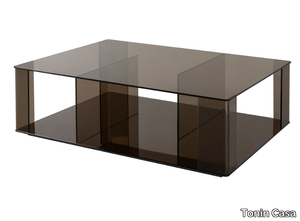
Tonin Casa > Coffee table
Here’s a refined and expanded product description, including a concise supplier overview and mention of the 3D file availability: *The Dedalo coffee table features a striking design crafted from transparent, extra-clear, and bronze glass, paired with a mirrored base that complements its elegant structure. Inspired by the mythical creator of the Cretan labyrinth, its name reflects the table’s intricate and artistic appeal. A 3D file of the product is available for download, allowing for seamless integration into virtual design plans. Tonin Casa, the esteemed Italian manufacturer behind this piece, is renowned for its innovative, high-quality furniture since 1975. Explore more details on the Dedalo rectangular coffee table and Tonin Casa’s collection at www.tonincasa.it.*
BLOOM - Square low painted metal coffee table _ Tonin Casa
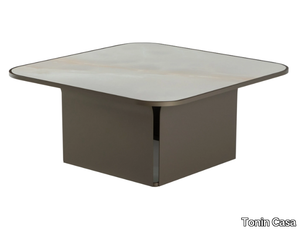
Tonin Casa > Coffee table
Here’s your rephrased and expanded product description, including a concise supplier overview and mention of the 3D file: *The Bloom coffee tables feature a sturdy painted steel base paired with an elegant, expansive porcelain stoneware top, seamlessly blending functionality with sophisticated design to enhance any living space. Available in a variety of finishes, the metal structure comes in carbon grey, matt white, or matt stone bronze, while the top offers a selection of premium porcelain stoneware options, including onyx grey, statuario altissimo, portoro, onyx amber, and emperador. For further customization, the 3D file of this product is available for download. Crafted by Tonin Casa, a renowned Italian design house celebrated for its innovative and high-quality furniture since 1975, the Bloom collection reflects the brand’s commitment to timeless aesthetics and craftsmanship.*
SINTESI - Open ash bookcase _ Tonin Casa
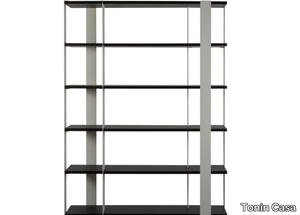
Tonin Casa > Cabinet
Here’s your rephrased and expanded product description, including a concise supplier overview and mention of the 3D file: *"Sintesi is a sleek and modular bookcase featuring a durable metal structure, available in a variety of finishes, paired with shelves in sophisticated black ash, Canaletto walnut, or dark oak heat-treated wood. A celebration of geometric precision and clean lines, this bookcase effortlessly integrates into any space, adding a touch of refined elegance. For added convenience, a downloadable 3D file of the product is available for visualization and planning. Further details can be found on the manufacturer’s product page for* **SINTESI by Tonin Casa**—*a renowned Italian design brand since 1975, celebrated for its contemporary furniture and timeless craftsmanship."* This keeps the supplier description brief while maintaining key details and highlights the 3D file availability. Let me know if you'd like any further refinements!
VENUS - Wooden display cabinet _ Tonin Casa

Tonin Casa > Cabinet
Here’s your rephrased and expanded product description, including a concise supplier overview and mention of the 3D file: *The Venus showcases pay homage to the goddess of beauty, combining elegant wooden structures—available in multiple finishes—with versatile glass designs in various sizes, creating a truly distinctive piece. Whether featuring double-sided panels or rhombus quilting, Venus adapts seamlessly to diverse furnishing styles, while its integrated lighting ensures it shines with the radiance of its celestial namesake. A downloadable 3D file of the product is available for preview. For more details, explore the VENUS collection by Tonin Casa, a renowned Italian design house celebrated for its innovative, high-quality furniture since 1975.*
FIDELIO - Low rectangular porcelain stoneware coffee table _ Tonin Casa
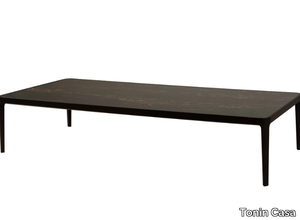
Tonin Casa > Coffee table
The **Fidelio coffee tables** combine a sturdy wooden base with an elegant porcelain stoneware top, embodying the sculptural richness and grandeur of solid wood. Available in four sizes, these tables offer a variety of finishes to suit any interior—**porcelain stoneware tops** come in onyx grey, statuario altissimo, Portoro, onyx amber, and Emperador, while the **wooden bases** are crafted in Canaletto walnut, dark oak heat-treated, or black ash. A **3D file of the product is available for download**, allowing for seamless integration into design plans. **Tonin Casa**, the esteemed Italian design house behind the Fidelio collection, has been crafting high-end furniture and decor since 1975, renowned for its innovative, contemporary designs. For more details, visit the manufacturer’s page: [FIDELIO | Rectangular coffee table – Tonin Casa](https://www.tonincasa.it/site/it/index/).
FIDELIO - Low square porcelain stoneware coffee table _ Tonin Casa
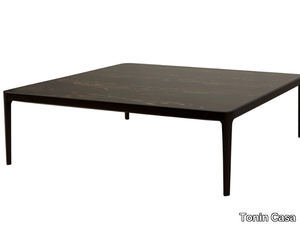
Tonin Casa > Coffee table
The **Fidelio coffee tables** combine a sturdy wooden base with an elegant porcelain stoneware top, embodying the sculptural richness and grandeur of solid wood. Available in four sizes, they offer versatile styling options with multiple finishes: the tops come in **Onyx Grey, Statuario Altissimo, Portoro, Onyx Amber, or Emperador porcelain stoneware**, while the wooden bases are offered in **Canaletto walnut, dark oak heat-treated, or black ash**. A **3D file of the product is available for download**, allowing for detailed visualization and planning. Crafted by **Tonin Casa**, a renowned Italian design house founded in 1975, the Fidelio tables reflect the brand’s commitment to high-quality materials and contemporary elegance. Explore their collection at [www.tonincasa.it](http://www.tonincasa.it).
DADDY - Tufted upholstered chair _ Tonin Casa
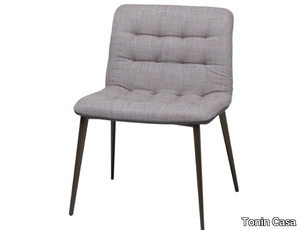
Tonin Casa > Chair
Here’s your rephrased and expanded product description, including a concise supplier overview and mention of the 3D file: *The **Daddy chair** features a sleek metal base available in carbon grey, matt stone bronze, or matt gold, paired with a luxuriously padded seat upholstered in fabric, velvet, or eco-leather. Its exquisite **capitonné tufting**—one of the most refined and captivating techniques in furniture craftsmanship—enhances its timeless elegance, while the sinuous contours ensure exceptional comfort. This unique design blends leather and fabric finishes, making it a striking statement piece for any sophisticated interior. A downloadable 3D file of the product is available for visualization and planning. For more details, explore **DADDY | Tufted Chair** by **Tonin Casa**—a renowned Italian design house celebrated for its high-end, contemporary furniture since 1975.*
GLAM - Chair with armrests and wooden base _ Tonin Casa
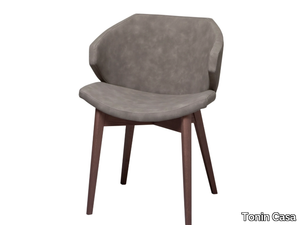
Tonin Casa > Chair
Here’s your rephrased and expanded product description, including the supplier details and mention of the 3D file: *The Glam armchair features sleek, defined lines and a refined aesthetic, with a sturdy base available in dark oak, Canaletto walnut, or black ash, paired with an upholstered seat offered in a variety of premium leathers, eco-leathers, or velvets. Its iconic curved backrest ensures exceptional comfort, making it both cozy and versatile for any interior setting. A 3D file of the product is available for download, allowing for seamless integration into design plans. Crafted by Tonin Casa—a renowned Italian design brand since 1975, celebrated for its innovative and high-quality furniture—the Glam chair embodies timeless elegance and modern sophistication. Explore more at [www.tonincasa.it](http://www.tonincasa.it).* This keeps the supplier description concise while adding value to the product details. Let me know if you'd like any further refinements!
GLAM - Upholstered chair with wooden base _ Tonin Casa
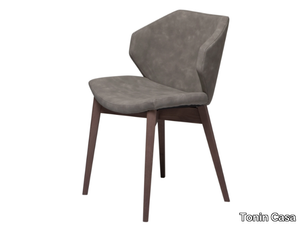
Tonin Casa > Chair
Here’s the rephrased and expanded product description, including a concise supplier overview and mention of the 3D file: *The Glam chair combines elegance and comfort, featuring a base crafted in dark oak heat-treated wood, Canaletto walnut, or black ash, paired with an upholstered seat available in a variety of premium leathers, eco-leathers, or velvets. Its defined lines and refined aesthetic make it a standout piece, while the iconic curved back ensures both style and coziness, perfect for versatile settings. A 3D file of the product is available for download, allowing for seamless integration into design projects. Manufactured by Tonin Casa—a renowned Italian design brand since 1975, celebrated for its contemporary furniture and meticulous craftsmanship—the Glam chair reflects the brand’s commitment to timeless sophistication. For more details, visit GLAM | Upholstered chair by Tonin Casa.*
GLAM - Upholstered chair with armrests _ Tonin Casa
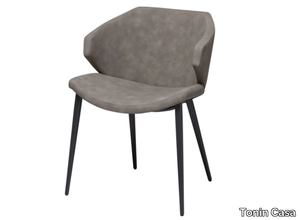
Tonin Casa > Chair
Here’s the rephrased and expanded product description, including a concise supplier overview and mention of the 3D file: *The Glam chair features a sleek charcoal gray 4-legged base and a seat with armrests, upholstered in elegant ecru nubuck eco-leather, combining durability with refined aesthetics. Its iconic, ergonomic backrest ensures exceptional comfort, while the clean, defined lines make it a versatile addition to modern interiors. A 3D file of the product is available for download, allowing for seamless integration into design plans. Crafted by Tonin Casa—a renowned Italian design house since 1975—the chair reflects the brand’s signature blend of innovation, premium materials, and timeless contemporary style.*
BERNINI - Nabuk double bed with upholstered headboard _ Tonin Casa
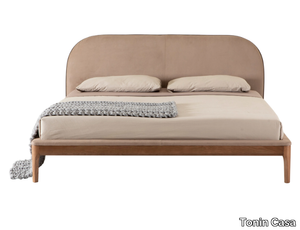
Tonin Casa > Bed frame
Here’s the rephrased and expanded product description, including the supplier details and mention of the 3D file: *The Bernini is an elegant double bed featuring a structure crafted in premium Canaletto walnut, dark heat-treated oak, or black ash, paired with a luxurious nubuck leather headboard that exudes timeless sophistication. Its defining feature is the generously upholstered headboard, showcasing meticulous craftsmanship and refined finishes, with an optional elegant creasing detail for added style. For those seeking customization or visualization, a 3D file of the product is available for download. Manufactured by Tonin Casa—a renowned Italian design brand celebrated for its high-end, contemporary furniture since 1975—the Bernini bed reflects the brand’s commitment to quality and innovative aesthetics.* (Note: I condensed the supplier description to one sentence while retaining key details about Tonin Casa’s reputation and heritage.)
Recommended Products
A wide range of product from furniture to finishes to meet the desire of all designers.
Starck T Glass holder
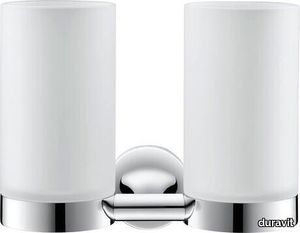
duravit > Accessories
Accent colour: White Matt, Glass, Brass, Type of mounting: Wall-mounted, Position toothbrush holder: Right, Left Design by Philippe Starck
Karree Soap dispenser
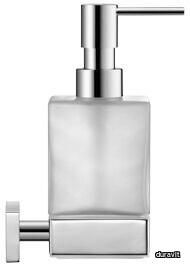
duravit > Accessories
Chrome, Type of mounting: Wall-mounted Design by Duravit
UPHOLSTERY
A wide range of Upholstery and materials provided by our suppliers to satisfy your needs.
AI services
Fringe Chatbot | Image Finder | Fringe Dall-e | Area Analyzer


